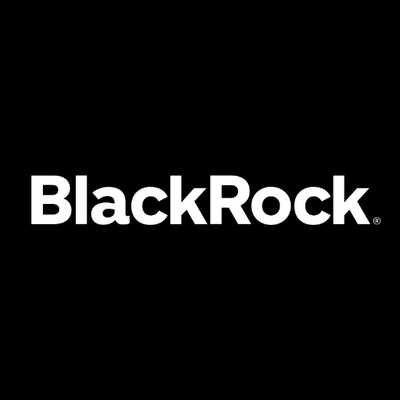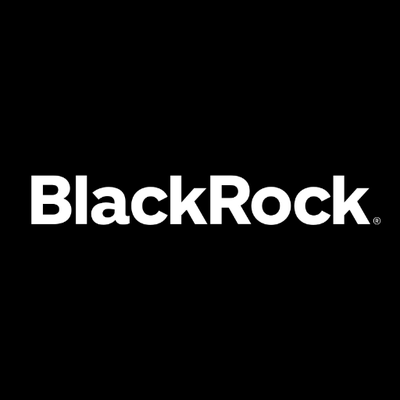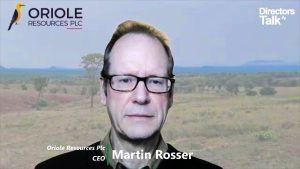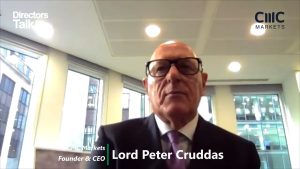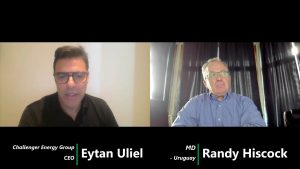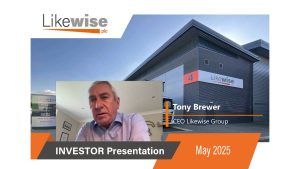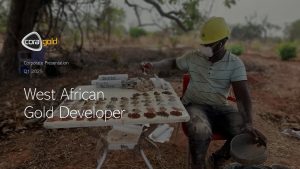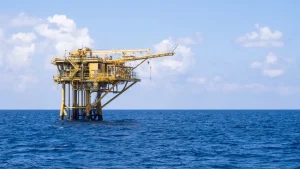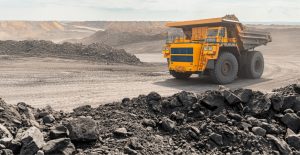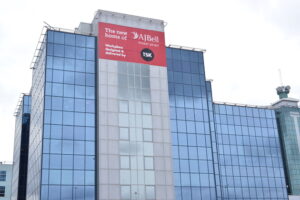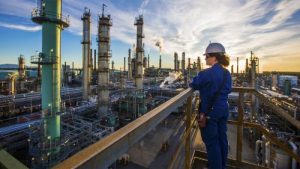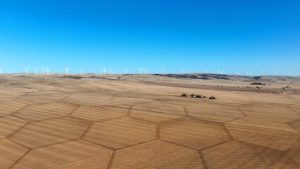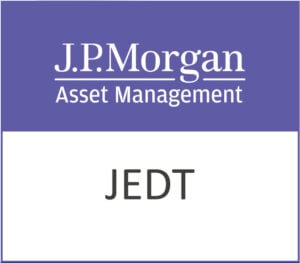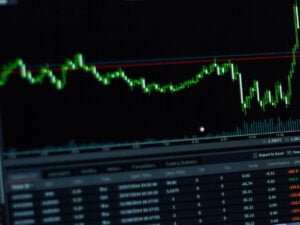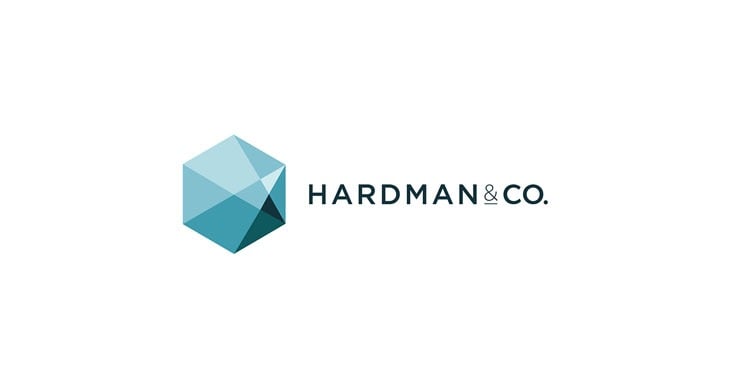BlackRock Energy and Resources Income Trust plc (LON:BERI) has announced its final results for the year ended 30 November 2020.
PERFORMANCE RECORD
| As at 30 November 2020 | As at 30 November 2019 | Change % | |
| Net assets (£’000)1 | 91,642 | 85,945 | 6.6 |
| Net asset value (NAV) per ordinary share (pence) | 80.76 | 75.28 | 7.3 |
| – with dividends reinvested2 | 13.9 | ||
| Ordinary share (mid-market) (pence) | 71.40 | 66.00 | 8.2 |
| – with dividends reinvested2 | 16.0 | ||
| Discount to net asset value2 | 11.6% | 12.3% | |
| ======== | ======== | ======== |
| For the year ended 30 November 2020 | For the year ended 30 November 2019 | Change % | |
| Revenue | |||
| Net profit on ordinary activities after taxation (£’000) | 4,900 | 4,578 | 7.0 |
| Revenue earnings per ordinary share (pence) | 4.31 | 3.97 | 8.6 |
| Dividends (pence) | |||
| 1st interim | 1.00 | 1.00 | – |
| 2nd interim | 1.00 | 1.00 | – |
| 3rd interim | 1.00 | 1.00 | – |
| 4th interim | 1.00 | 1.00 | – |
| ————– | ————– | ————– | |
| Total dividends paid and payable | 4.00 | 4.00 | – |
| ======== | ======== | ======== |
1 The change in net assets reflects market movements, the buyback of shares and dividends paid during the year.
2 Alternative Performance Measures, see Glossary contained within the Annual Report which can be found on the Company’s website at wwww.blackrock.com/uk/beri.
CHAIRMAN’S STATEMENT
Dear Shareholder
MARKET OVERVIEW
This year has been challenging for investors with the COVID-19 pandemic creating deep uncertainty about the prospects for economies and triggering extreme volatility in markets. As the pandemic took hold, demand for commodities collapsed and significant operational and supply disruption exacerbated sharp falls in their prices. Stock markets subsequently rallied, aided by positive economic data from China and the oil price staged a partial recovery on the back of Organisation of Petroleum Exporting Countries+ (OPEC+) production cuts.
The second half of the year was generally more positive for markets, and the emergence of several successful COVID-19 vaccines in November 2020 further restored investor confidence. Companies in the mining and energy sectors generally had a strong end to 2020, benefiting from the environment of ultra-low interest rates and supportive fiscal policy. However, as the COVID-19 pandemic continues to evolve, some market volatility is expected to remain until vaccines have been rolled out and economic conditions have become somewhat more normal. On a positive note, investment in renewable and sustainable resources has continued to rank highly in terms of fiscal commitment and prioritisation for most governments despite the economic challenges posed by the pandemic. Sustainability trends continued to progress through 2020 with governments across the world announcing new carbon reduction targets and technology advancing in the renewable power and electric vehicles arenas. BlackRock Energy and Resources Income Trust is well positioned to take advantage of these trends with approximately 23.8% of its portfolio invested in energy transition stocks as at the end of the year.
PERFORMANCE
During the year ended 30 November 2020 the Company’s net asset value per share (‘NAV’) rose by 13.9% and its share price increased by 16.0% (both percentages in sterling terms with dividends reinvested). The Company’s objectives are to achieve both an annual dividend target and, over the long term, capital growth. Consequently, the Board does not formally benchmark performance against mining and energy sector indices as meeting a specific dividend target is not within the scope of these indices. However, to set the performance above in the context of the market backdrop, the EMIX Global Mining Index rose by 19.6% and the MSCI World Energy Index fell by 32.6% over the same period. The Company now holds up to 30% of its portfolio in energy transition stocks; to give background context to how the renewable energy sector has performed, since the portfolio was realigned with effect from 1 June 2020, the S&P Global Clean Energy Index rose by 84.8% over the six months ended 30 November 2020 and the WilderHill Clean Energy Index rose by 143.5% (all percentages in sterling terms with dividends reinvested). It should be noted that these comparisons are given for illustrative purposes only.
Performance to 30 November 2020 | 1 Year change % | 3 Years change % | 5 Years change % | Since inception2 % |
| Net Asset Value (with dividends reinvested)1 | 13.9 | 23.2 | 81.2 | 82.2 |
| Share price (with dividends reinvested)1 | 16.0 | 13.5 | 64.2 | 60.7 |
| ======== | ======== | ======== | ======== |
1 Alternative Performance Measures. Further details of the calculation of performance with dividends reinvested are given in the Glossary contained in the Company’s annual report for the year ended 30 November 2020.
2 The Company was launched on 13 December 2005.
Further information on investment performance is given in the Investment Manager’s Report. Since the period end and up until close of business on 2 February 2021 the Company’s NAV has increased by 10.2% and the share price has risen by 14.0% (with dividends reinvested).
FOCUS ON ENERGY TRANSITION
The Board announced on 17 March 2020 that, within the parameters of the Company’s existing investment policy, it was the Board’s intention to increase the focus on exposure to stocks that were benefiting from the transition in the energy sector, away from carbon-based energy supplies towards alternative and renewable sources, such that these would represent a greater proportion of the stocks held within the portfolio in the medium term, subject to market conditions. The implementation of this transition began with effect from 1 June 2020, and as at 30 November 2020, 23.8% of the Company’s portfolio was held in energy transition stocks. The Board views the global transition to a low-carbon economy as a secular trend and an investment opportunity that demands inclusion in the Company’s portfolio in a significant way. This view is borne out by the initial performance of this part of the portfolio; between 1 June 2020 and 30 November 2020 the transition energy and mining portion of the Company’s portfolio contributed 8.3% to an overall increase in the NAV per share over the same period of 26.6%.
Although the Board does not formally benchmark the Company’s performance against mining and energy sector indices, it does compare the performance of the portfolio against a bespoke mining and energy composite index for internal purposes and this has evolved in line with portfolio changes. The neutral sector weightings of 50% mining and 50% traditional energy in the current composite internal index have been changed to 40% mining, 30% traditional energy and 30% energy transition sector weightings. In addition, with effect from September 2020, the Board have moved to use a version of the mining index that excludes gold companies as this sector is of limited relevance as the portfolio moves to focus more on stocks benefiting from the transition in the energy sector away from carbon-based energy supplies towards alternative and renewable sources.
REVENUE RETURN AND DIVIDENDS
While dividends have come under pressure in the wider equity markets as a result of the COVID-19 crisis, the income from the investments held by your Company has remained relatively robust. Revenue return for the year to 30 November 2020 was 4.31 pence per share (2019: 3.97 pence), boosted by an uplift of 0.83 pence per share in respect of corporation tax refunds of £945,614 which were repaid to the Company in August 2020 as part of the Franked Investment Income (FII) Group Litigation Order (GLO) vs HMRC (further details of which are set out in note 7 to the financial statements in the Company’s Annual Report for the year to 30 November 2020).
The Board’s current target is to declare quarterly dividends of at least 1.00 pence per share for the year to 30 November 2021, making a total of at least 4.00 pence. This target represents a yield of 5.6% based on the share price of 71.40 pence per share as at 30 November 2020.
The Board does not expect the shift in focus away from carbon-based energy supplies towards alternative and renewable sources to impair the Company’s ability to meet its target dividend, which will be delivered primarily from a mix of dividend income from the portfolio and dividend reserves, supported by the payment of income out of capital if required. The Company may also write options to generate revenue return, although the portfolio managers’ focus is on investing the portfolio to generate an optimal level of total return without striving to meet an annual income target and they will only undertake option transactions to the extent that the overall contribution is beneficial to total return.
CHANGES TO PORTFOLIO MANAGEMENT AND FEES
Given the Company’s increased focus on energy transition stocks, it was announced on 17 March 2020 that BlackRock’s energy specialist Mark Hume would be replacing Olivia Markham as portfolio manager to work alongside Tom Holl. Mark has ten years of experience directly managing energy stocks and is co-manager of BlackRock’s all-cap Energy strategy.
The Board would like to take the opportunity to thank Olivia for her excellent contribution in managing the Company’s portfolio over the last six years.
The Directors are very mindful of the need to ensure that shareholders receive good value from the operations of the Company and regularly review all its costs. To that end, as also announced on 17 March 2020, we agreed a reduction in the management fee payable by the Company to BlackRock Fund Managers Ltd (the “Manager”) to 0.80% on gross assets per annum (previously 0.95% per annum on the first £250 million of gross assets and 0.90% per annum thereafter). In addition, it was agreed that the Company’s Ongoing Charges, as set out and defined in its annual report (and for avoidance of doubt including the management fee), would be capped at 1.25% per annum of average daily net assets with effect from the same date. More information is set out in note 4 below.
GEARING
The Company operates a flexible gearing policy which depends on prevailing market conditions. It is not intended that gearing will exceed 20% of the gross assets of the Company. The maximum gearing used during the period was 14.7%, and the level of gearing at 30 November 2020 was 6.5%. Average gearing over the year to 30 November 2020 was 5.2%. For calculations, see the Glossary contained in the Company’s annual report for the year ended 30 November 2020.
DISCOUNT CONTROL
The Directors recognise the importance to investors that the Company’s share price should not trade at a significant premium or discount to NAV, and therefore, in normal market conditions, may use the Company’s share buyback, sale of shares from treasury and share issuance powers to ensure that the share price is broadly in line with the underlying NAV. The Company currently has authority to buy back up to 14.99% of the Company’s issued share capital (excluding treasury shares) and to allot ordinary shares representing up to 10% of the Company’s issued ordinary share capital. Over the year to 30 November 2020, the Company’s shares have traded at an average discount of 13.7%, and within a range of a 3.6% discount to a 24.6% discount. The Company bought back a total of 700,000 ordinary shares between 1 December 2019 and 20 February 2020 at an average price of 66.06 pence per share, for a total consideration of £466,000 and at an average discount of 12.3%. These shares were placed in treasury for potential reissue, thereby saving the associated costs of an issue of new shares if demand arises. However, as the COVID-19 pandemic took hold and global markets plummeted in March and April 2020, the extreme market volatility created challenges for many investment companies in determining appropriate intraday pricing levels for buy back transactions. Consequently the Board has not been active in buying back shares over the second half of the period under review and into December 2020, but continues to monitor the market and, in conjunction with the Company’s broker, gives consideration to the possibility of buying back shares on a daily basis.
BOARD COMPOSITION
The Board supports the increasing focus on independence, tenure and succession planning set out in the updated Financial Reporting Council’s review of the UK Corporate Governance Code, which applies for periods commencing on or after 1 January 2019. With this in mind, the Board commenced a search during the year to identify a new Director to join the Board, assisted by a third-party recruitment firm. Following a detailed evaluation of each of the candidates, the Board selected Mr Andrew Robson who was subsequently appointed with effect from 8 December 2020. Mr Robson brings a wealth of financial sector experience and expertise, both complementing and enhancing the skills and experience of the existing Board. Mr Robson will stand for election at the forthcoming Annual General Meeting and will then assume the role of Chairman of the Audit and Management Engagement Committee.
Further information on Mr Robson and all of the Directors can be found in their biographies set out on pages 35 to 37 of the Company’s annual report for the year ended 30 November 2020. Information on the recruitment and selection process undertaken and details of the Board’s policy on director tenure and succession planning can be found in the Directors’ Report within the Company’s annual report for the year ended 30 November 2020.
After many years of excellent service to the Company, Michael Merton is standing down from the Board at this AGM. Michael joined the Board in July 2010 and has acted as the Chairman of the Audit and Management Engagement Committee since March 2014. On behalf of all shareholders, and my fellow Directors, I would like to thank Michael for all his hard work and wise counsel over the years. Following Mr Merton’s retirement, Mr Robson will take over the role of Chairman of the Audit and Management Engagement Committee.
CHANGES TO ARTICLES OF ASSOCIATION
The Board is proposing to make amendments to the Articles to enable the Company to hold general meetings partially by electronic means and to give additional powers in respect of postponing or adjourning meetings in appropriate circumstances. The amendments are being sought to introduce flexibility to respond to challenges such as those posed by government restrictions on social interactions as a result of the COVID-19 pandemic, which have made it impossible at times for shareholders to attend physical general meetings.
The principal changes proposed to be introduced in the Articles, and their effect, are set out in more detail in the Directors’ report contained in the Company’s annual report for the year ended 30 November 2020.
ANNUAL GENERAL MEETING ARRANGEMENTS
The AGM will be held at 10:00 a.m. on Tuesday, 16 March 2021 at the offices of BlackRock at 12 Throgmorton Avenue, London EC2N 2DL. At the time of writing, various guidances have been issued by the UK, Scottish and Welsh governments, respectively, regarding measures to reduce the transmission of COVID-19 in the UK. These measures are, and will continue to be, subject to periodic amendment and currently impose rules on social distancing and limitations on, among other things, public gatherings.
Accordingly, in view of this guidance, the Board is changing the format of the AGM this year to follow the minimum legal requirements for an AGM. Only the formal business set out in the Notice will be considered, with no live presentation by the Investment Manager. A presentation from the Investment Manager will be made available on the Company’s website following the conclusion of the AGM. In line with this guidance, shareholders are strongly discouraged from attending the meeting and indeed entry will be refused if current UK Government guidance is unchanged. As shareholders will not be able to attend the Annual General Meeting, the Board strongly encourages all shareholders to exercise their votes by completing and returning their proxy forms in accordance with the notes to the Notice of Meeting contained in the Company’s annual report for the year ended 30 November 2020. If there are any changes to the arrangements for the Annual General Meeting as a result of changes to government guidance, the Company will update shareholders through the Company’s website and, if appropriate, through an announcement on the London Stock Exchange. The Board of course welcomes questions from shareholders and, given the format and prevailing circumstances, shareholders are asked to submit any questions they may have to the Board in advance of the AGM. The Board or the Investment Manager will respond to all questions received. Shareholders may submit questions to the Board before 12 March 2021 by email at: cosec@blackrock.com. The Board would like to thank shareholders for their understanding and co-operation at this difficult time and look forward to meeting you at some safer stage in future.
The Board is aware that many shareholders look forward to hearing the views of the Investment Managers and may have questions for the Investment Managers and the Board. Accordingly, the Annual General Meeting will be immediately followed by a webinar, to include a presentation from the portfolio managers, followed by a live question and answer session. Shareholders are invited to join the webinar and address any questions they have either by submitting questions during the webinar or in advance by writing to the Company Secretary at the address on page 127 of the Company’s annual report for the year ended 30 November 2020, or by email to: cosec@blackrock.com. Details on how to register for this event can also be found on the Company’s website, or obtained by writing to the Company Secretary.
MARKET OUTLOOK AND PORTFOLIO POSITIONING
Recent signs of economic recovery in many of the world’s major nations have boosted oil and mined commodity prices and in turn share prices in these sectors. In the mining sector in particular, free cash flow yields are high and companies are delivering strong returns. As economic activity normalises with the rolling out of COVID-19 vaccines and as governments, companies and consumers strive to decarbonise economic activity over the coming years, mining companies will play an important role in providing the materials required to enable the growth of the lower carbon economy and our portfolio managers are positive about the prospects for the mining sector for 2021. The shift to a lower carbon economy and the amount of capital that is being committed to its development also presents a significant investment opportunity, although it will be critical to be highly selective in choosing the industries and companies that form part of the energy transition portion of the portfolio. The Board is confident that the Company is currently well placed to benefit from this key investment trend.
ED WARNER
4 February 2021
INVESTMENT MANAGER’S REPORT
MARKET OVERVIEW
The word ‘unprecedented’ is often overused for dramatic effect but its frequency of use in 2020 has been unsurprising and usually justifiable. As we discussed in the Interim Report, the COVID-19 induced demand collapse across the commodity space as well as significant operational and supply disruption caused market volatility last seen in the global financial crisis of 2008. The second half of the year has been no less challenging for many people across different regions and businesses have seen wildly varying fortunes, but the mining sector and broad energy space (including companies focused on energy transition) have had a strong end to 2020. Risk assets more broadly have continued to benefit from an environment of ultra-low nominal interest rates and supportive monetary and fiscal stimulus from central banks and governments respectively.
At the mid-point of the year we noted the strength of China’s economic recovery and this has continued with great momentum through the second half of the year. Significant credit growth supported a strong rebound in fixed asset investment across the three major areas of manufacturing, real estate and infrastructure, and we expect this impulse to continue to support strong commodity demand going into 2021. As we look to 2021 in China, a key event will be the launch of the 14th Five Year Plan in March 2021. There has already been some insight into the notable features with the proposals being approved at the Fifth Plenum in October 2020 – we were particularly excited by some of the sustainability aspects such as peak carbon by 2030, as well as the goal of continued economic growth with the aim of per capita Gross Domestic Product (GDP) to match that of moderately developed nations by 2035. These ambitions not only support commodity demand but will change the composition of that demand – something we have written about previously and a key driver behind the evolution of the Company to substantially increase its exposure to companies driving the energy transition.
One of the key features of the year has been the acceleration of government commitments to transition economic activity to be less carbon intensive. In previous times of economic and market turmoil, matters of sustainability have often been deprioritised but it has been great to see in 2020 that many sustainability trends have continued to advance. There have been a succession of announcements from governments across the world on new carbon reduction targets, continued rapid technology development in renewable power and electric vehicles, and significant increase in investment demand across various aspects of the transition to a lower carbon economy. We have continued to evolve the Company to take advantage of the array of investment opportunities we see as a result of the transition and this exciting move is detailed in the sections that follow.
Commodity | 30 November 2020 | 30 November 2019 | % change | 2020 on 2019 Average Price % Change1 |
| Base Metals (US$/tonne) | ||||
| Aluminium | 2,036 | 1,792 | 13.6 | -6.8 |
| Copper | 7,569 | 5,843 | 29.5 | 0.5 |
| Lead | 2,062 | 1,923 | 7.2 | -9.3 |
| Nickel | 15,985 | 13,618 | 17.4 | -0.9 |
| Tin | 18,642 | 16,504 | 13.0 | -10.1 |
| Zinc | 2,776 | 2,300 | 20.7 | -13.7 |
| ————– | ————– | ————– | ————– | |
| Precious Metals (US$/oz) | ||||
| Gold | 1,774.4 | 1,461.5 | 21.4 | 26.5 |
| Silver | 22.6 | 17.0 | 32.9 | 24.0 |
| Platinum | 979.0 | 894.0 | 9.5 | 2.6 |
| Palladium | 2,400.0 | 1,832.0 | 31.0 | 45.1 |
| ————– | ————– | ————– | ————– | |
| Energy | ||||
| Oil (WTI) (US$/Bbl) | 45.3 | 55.2 | -17.9 | -27.4 |
| Oil (Brent) (US$/Bbl) | 47.6 | 62.4 | -23.7 | -29.8 |
| Natural Gas (US$/MMBTU) | 2.9 | 2.3 | 26.1 | -21.4 |
| Uranium (US$/lb) | 29.5 | 26.0 | 13.5 | 11.2 |
| ————– | ————– | ————– | ————– | |
| Bulk Commodities (US$/tonne) | ||||
| Iron ore | 130.5 | 87.0 | 50.0 | 12.0 |
| Coking coal | 435.0 | 260.0 | 67.3 | 51.0 |
| Thermal coal | 63.9 | 69.4 | -7.9 | -26.8 |
| ————– | ————– | ————– | ————– | |
| Equity Indices | ||||
| EMIX Global Mining Index (US$) | 964.4 | 787.9 | 22.4 | n/a |
| EMIX Global Mining Index (£) | 728.5 | 609.2 | 19.6 | n/a |
| MSCI World Energy Index (US$) | 211.4 | 303.6 | -30.4 | n/a |
| MSCI World Energy Index (£) | 158.3 | 234.7 | -32.6 | n/a |
| ————– | ————– | ————– | ————– |
Source: Datastream
1 Average of 30/11/18-30/11/19 to average of 30/11/19-30/11/20
PORTFOLIO ACTIVITY & INVESTMENT PERFORMANCE
The second half of 2020 saw a step-change in the pace of the evolution of the portfolio. By July we had moved around 30% of the NAV into companies across the energy transition spectrum. Insight into the companies added to the portfolio is given in the relevant section below but the exposure was not confined to just solar and wind companies. We initiated positions in a select number of utilities who are driving their business forward with significant expansion of their renewables generation capacity. We also invested in a number of semiconductor companies whose products are vital enablers of key components in electric vehicles, as well as having many other applications in the energy transition.
As can be seen in the charts below, the investments in energy transition companies were funded by selling positions in the mining and conventional energy sectors. We did not do this on a “pro rata” basis but exited some lower conviction positions entirely in order to maintain a focused portfolio of stocks. Also we reduced our conventional energy exposure by a greater amount than we did our mining exposure – the rapid recovery in the Chinese economy we viewed as being more supportive for mining commodities and their producers than for the oil and gas companies, where demand is less China-centric. Although some of the energy companies were at the time cheaper on a variety of valuation metrics, we wanted to be more forward-looking and anticipate mined commodity outperformance. Secondly we wanted to take into consideration that many mining companies had an increasing ESG narrative both around the use of their products in the decarbonisation of economic activity and their approach to managing climate risk on a company level basis.
The conventional energy sector underperformed the mining and energy transition sectors materially from June through to November, which was a benefit to the portfolio given our positioning. However, when the first vaccine announcements were made in early November, we took the view that this removed the most bearish scenario for the oil price and energy companies in 2021. Given the share price falls of many energy companies, we took our weighting in conventional energy companies from below 20% to around 30%. This was funded through a combination of profit taking in some sustainable energy companies that had performed exceptionally well in the run up to the US election, the reduction in the gold company positions and the use of gearing. This swift and decisive move allowed the portfolio to capture a large part of the strong rally that followed in the energy equities.
The Company delivered a NAV total return of 26.5% over the six month period to end November 2020, and 13.9% for the Company’s financial year ended 30 November 2020.
INCOME
2020 was a challenging year for dividends in the market as a whole and whilst some parts of the portfolio – the conventional energy sector – also had to make some tough decisions, other parts of the portfolio fared rather better. The mining sector largely abandoned progressive dividend policies a few years ago, which pretty much marked the bottom of the last cycle. Since then they have moved to a pay out ratio approach but the cashflows generated with recent iron ore prices etc. have enabled them to maintain, and in some cases increase, strong dividends and return cash via buybacks.
Another positive in 2020 was the improving attitude of gold mining companies towards dividends. Whilst they are never likely to be a core holding for a generalist income fund, the substantial dividend increases of portfolio holdings such as Newmont not only bolstered the portfolio’s income but were a strong signal of capital discipline by these companies to the market.
PORTFOLIO ASSET ALLOCATION¹
| Mining % | Energy % | Energy Transition % | |
| Nov-19 | 51.2 | 48.8 | – |
| Dec-19 | 58.9 | 41.1 | – |
| Jan-20 | 52.4 | 47.6 | – |
| Feb-20 | 51.7 | 48.3 | – |
| Mar-20 | 56.5 | 43.5 | – |
| Apr-20 | 54.8 | 45.2 | – |
| May-20 | 54.0 | 46.0 | – |
| Jun-20 | 52.7 | 22.3 | 25.0 |
| Jul-20 | 52.9 | 19.4 | 27.7 |
| Aug-20 | 51.7 | 18.9 | 29.4 |
| Sep-20 | 50.8 | 17.8 | 31.4 |
| Oct-20 | 49.5 | 19.7 | 30.8 |
| Nov-20 | 45.3 | 30.9 | 23.8 |
GEARING²
| Net Cash/(Gearing) % | |
| Nov-19 | -14.7 |
| Dec-19 | -8.5 |
| Jan-20 | -3.7 |
| Feb-20 | -3.6 |
| Mar-20 | -8.4 |
| Apr-20 | -7.3 |
| May-20 | -3.0 |
| Jun-20 | -2.9 |
| Jul-20 | -5.7 |
| Aug-20 | -3.5 |
| Sep-20 | -3.0 |
| Oct-20 | 3.0 |
| Nov-20 | -6.5 |
1 Portfolio positioning is expressed as a percentage of gross assets (as defined in the Glossary contained in the Company’s annual report for the year ended 30 November 2020).
2 Gearing as a percentage of net assets.
PORTFOLIO POSITIONING¹
Portfolio on 30 November 2019
| Mining | 51.2% |
| Energy | 48.8% |
Portfolio on 30 September 2020
| Mining | 50.8% |
| Energy | 17.8% |
| Energy Transition | 31.4% |
Portfolio on 30 November 2020
| Mining | 45.2% |
| Energy | 31.0% |
| Energy Transition | 23.8% |
Source: BlackRock, November 2020.
1 Portfolio positioning is expressed as a percentage of total investments.
The level of gearing is therefore not shown as a separate item. During the year ended 30 November 2020, gearing ranged between net cash of 3.0% to a net gearing of 14.7% of net assets and averaged 5.2% of net assets during the year.
The chart on page 15 of the Company’s annual report for the year ended 30 November 2020 setting out the FSTE 100 Dividend Index level for the year ended 30 November 2020 helps to give context to the scale of the dividend challenges faced by the broader equity market. It shows the expectations for the dividend payments for the FTSE 100 in 2021 – whilst it is encouraging to see that expectations for next year have recovered from their Q2 lows, they have still fallen by roughly one third compared to what they were at the start of the year.
The underlying dividend income for the portfolio has shown greater resilience than the dividends for the equity market as a whole and the outlook for 2021 looks strong given the commodity prices and margins being generated, especially in the mining sector.
It is important to recognise one of the impacts of evolving the portfolio to include a substantial allocation to energy transition companies. Whilst we own some renewables focused utilities that pay an acceptable yield, the shift to greater exposure to energy transition companies is designed to inject a greater element of growth into the portfolio. The trade off for this is that the companies are reinvesting a greater proportion of their cashflow into growing their business (as opposed to distributing it to shareholders) so the dividends from these companies are, in general, lower than in the mining and conventional energy sectors.
The flexibility to pay dividends from reserves resulted in the level of option writing over the portfolio being lower during the year and just over 25% of our income was generated through the selling of calls and puts. Notable in our option activity was selling puts on a selection of conventional energy companies in October and in September, selling calls on some gold positions that were lacking in short term positive catalysts.
It should also be noted that we had a one-off gain on the tax line where a refund of tax resulted in a positive contribution from this line item, which is of course usually a material negative expense.
ENERGY
The onset of major lockdowns in March 2020, in an effort to contain the COVID-19 pandemic, saw global demand for oil products experience its worst contraction since the Second World War. The International Energy Agency (IEA) estimates that consumption fell by almost 9 million barrels per day year on year and by a staggering 16 million barrels per day in the second quarter 2020. The sharp, and unexpected, collapse in demand was met with a surprising month-on-month increase in OPEC output of more than 2 million barrels per day in April 2020. Not surprisingly, Brent oil prices plummeted over 70%, bottoming out at $17/barrel later in the month. The dramatic fall in oil prices spurred a historic agreement from OPEC and several other countries to cut output by almost 14 million barrels per day – the lowest level in nearly a decade. At the time of writing, Brent oil prices have now recovered to $50/barrel. The structure of crude prices (the price today versus the price for delivery in 6 months) is a good barometer of physical market tightness. Brent crude structure recently moved into backwardation (positive), pointing to a significant improvement in supply/ demand fundamentals.
From an equity standpoint, the severe turbulence in commodity prices translated into sharp underperformance for energy stocks, with the MSCI ACWI Energy Index falling almost 60%, to its lowest level in over two decades. Despite the precipitous fall in energy equities, swift action to rebalance the market has seen the sector keep pace with the recovery in broader world markets since the March 2020 lows, albeit still some way off the recovery seen in oil prices over the same period.
On a relative basis, we maintained a strong skew away from the traditional energy names and towards mining and energy transition stocks through much of the year. Within the energy sector, it was the larger-cap stocks that fared better with most starting the year with far stronger balance sheets and more diversified cash flows. European large-cap oil companies were down 21% through 30 November 2020 as compared to the global index which was down 31% and US energy stocks down 36%. This helped relative performance within the energy holdings in the Company given a preference for the European names. Importantly, following the announcement of positive news around a COVID-19 vaccine in early November 2020, we took the opportunity to significantly increase the Company’s exposure towards traditional energy names allowing the Company to capture much of the equity price improvement through the month.
As we look into 2021 and beyond, we believe that the outlook for traditional energy equities is increasingly positive. This partly reflects a somewhat contrarian view around supply. Much of the narrative throughout the COVID-19 pandemic has focused on demand for hydrocarbons and its impending peak. We have little doubt that the shift of capital towards decarbonisation is very likely to outpace many forecasts, eroding the demand for traditional hydrocarbons. Yet, such has been the financial shock across the industry, capital is now (finally) being rationed at a pace that will very likely see a dramatic level of underinvestment in a supply base that is witnessing steep declines. We believe that the energy equities are exhibiting much of the capital discipline enacted by the mining sector back in 2015. This will lead to better capital allocation and increasing returns to shareholders – we are entering the “Era of the Shareholder” for energy equities.
ENERGY TRANSITION
Climate change and decarbonisation have been front and centre for corporates, governments and society as a whole. In many ways, the COVID-19 pandemic has helped galvanise global leaders towards ‘building back better’. This is now translating into very firm policy commitments across the major world economies. The recent confirmation of a Democratic victory in the United States ought to lend credibility to President Biden’s electoral commitments for a $2 trillion investment in clean energy in an effort to catapult the nation towards carbon-free electricity by 2035. Closer to home, the EU has firmed up plans to hit Net Zero by 2050 with the aid of a €7 trillion investment plan, almost half of which could be allocated towards the Utilities sector.
Perhaps one of the most intriguing outcomes of such a tumultuous year has been the resilience of renewables – particularly in the electricity sector. Based on IEA data, global electricity demand is expected to contract by more than 2% in 2020 compared to the prior year. In contrast, renewables-based generation increased by almost 7%. Cash flows from renewables-based electricity also remained resilient, benefiting from policy-driven, fixed-price long-term contracts. This underlines the importance of government support for continued renewables build-out – both a risk and a reward.
We expect another strong year for climate change policy with the US highly likely to re-enter the Paris Climate Agreement paving the way for President Biden’s $2 trillion plans. Further afield, Chinese President Xi Jinping announced in September 2020 that China will strengthen its 2030 climate target to hit peak emissions by 2030 and achieve carbon neutrality by 2060. The President also recently announced that China will increase its installed wind and solar capacity to at least 1,200GW by 2030. This compares to a current capacity of over 450GW. Taken together this should pave the way for strong growth in renewable energy demand as well as other areas of decarbonisation such as energy efficiency and transportation. The Company is well positioned to take advantage of improved global policy certainty.
MINING
The first half of the year saw exceptional volatility in the mining sector but despite the large drawdown in March, the sector closed the first half of the year slightly in the black – though this was driven by the strength in precious metals prices rather than industrial commodities. The positive momentum from the bounce off the March lows continued strongly through the second half of the year with industrial metals taking market leadership from the precious metals as resurgent economic activity drove better than expected demand and supply continued to fall short of expectations.
The chart on page 19 of the Company’s annual report for the year ended 30 November 2020 shows one of the key positive drivers for metals demand during the year – the significant easing of credit conditions in China, with notable increases in local government debt issuance. This is typically used to fund infrastructure and other commodity intensive activity, and this was reflected in strong growth in steel demand / production in China during the year with over 5% growth year on year.
Demand is only one side of the commodity price equation – supply is equally important. The chart below shows some of the supply challenges that occurred during 2020. Some of these have been directly related to COVID-19 lockdowns and disruptions; for example, Peru (a major copper producer) shutdown many mines in the second quarter, as did a number of other key copper producing countries. Elsewhere though it was not just COVID-19 that caused supply to fall short of expectations – in platinum, Anglo Platinum has several issues at its refineries causing cuts to production and in zinc there was a pit wall failure at a major mine in Namibia.
The revenue of some major listed mining companies, such as Rio Tinto and Vale, is dominated by iron ore. As shown in the chart below, iron ore supply also fell short of expectations, primarily as Vale struggled to hit its targets with frequent operational disruptions from tailings dam safety checks. With steel production (and therefore iron ore demand) being strong in China, iron ore markets were very tight and prices rose 50% during the year. Following the Company’s year end of November, prices have continued to surge higher and producers are now earning record margins and generating record cashflow from these businesses, which should underpin strong shareholder returns going into the new year.
We would expect that supply challenges will continue in 2021 and help maintain the tight balance in many metals markets, which supports prices at elevated levels. Although direct COVID-19 operational disruption will hopefully ease through 2021, many mines reduced maintenance this year as they tried to reduce the number of people at site and supply chains were disrupted. This increases the need for maintenance downtime next year and also increases the risk of breakdowns etc. in equipment that has received less preventive maintenance than it should. Therefore we think that supply in many metals will again be lower than consensus expectations in 2021 and prices have risk skewed asymmetrically to the upside.
One of the Company’s largest commodity exposures is copper – a metal that is key to the transition to a lower carbon economy. Copper demand over the next decade will be strongly supported by the electrification of cars; it is estimated that an EV has approximately four times the copper content per vehicle when compared to an internal combustion engine car. Currently copper miners (and companies that produce other metals that are indispensable in the energy transition) trade in the equity market at a substantially lower valuation multiple than companies such as wind turbine manufacturers or renewable energy utilities. Mining companies that are able to operate with respect for their host communities and articulate a credible climate strategy will be set to appeal to investors in the next few years in a way they perhaps haven’t in the past.
MARKET OUTLOOK & PORTFOLIO POSITIONING
After such an eventful and often unpredictable year, making forecasts for the whole year ahead is somewhat daunting. However, the experiences of this year have reinforced for us some key trends that we think will drive our markets and the portfolio in the future.
Chart showing movement in 2020 mined production estimates (current vs. start of year)
| Percentage movement | |
| Nickel | -2.3 |
| Alumina | -3.1 |
| Aluminium | -3.9 |
| Copper | -4.3 |
| Iron ore | -4.9 |
| Zinc | -8.9 |
| Palladium | -14.5 |
| Platinum | -17.0 |
Source: WoodMac, Norilsk, Barclays Research.
MSCI ESG Ratings for Portfolio Holdings
| Nov-19 % | Nov-20 % | |
| AAA | 3.1% | 15.6% |
| AA | 9.5% | 7.7% |
| A | 28.4% | 23.9% |
| BBB | 32.0% | 22.1% |
| BB | 16.0% | 16.1% |
| B | 5.5% | 4.6% |
| CCC | 3.8% | 7.0% |
| None | 1.7% | 3.0% |
First is that the drive by Governments, companies and consumers to decarbonise economic activity is a firmly established trend that is only going to accelerate from here. The amount of capital that is being committed to the industries associated with this is greater than we forecast even a year ago and driving growth rates that have remained elevated despite all of the COVID-19 challenges.
Whenever an area experiences such a wave of capital, there will almost certainly be capital misallocated and subsequent returns prove disappointing – many will recall such examples from the commodity supercycle of the 2000s. This is why it is critical for us to remain selective in terms of the industries and companies we choose to have exposure to in the energy transition part of the portfolio.
The flip side of this paradigm shift in the availability and cost of capital for the energy transition is the conventional energy sector has seen capital withdrawn at an unprecedented rate. As we look to 2021 and beyond, it is likely that the decline in oil supply will be faster than the destruction of demand. This could lead to oil prices being higher than consensus expectations and was one of the key factors in having just under a third of the portfolio in conventional energy companies at the start of 2021. Whilst we see the long-term structural growth drivers in the energy transition companies, our flexible approach allows us to take advantage of opportunities in the conventional energy sector. We will continue to engage with company boards and management on all aspects of ESG as we believe the different approaches by various companies is going to be a key determinant in the relative shareholder returns in the coming years. Details of the ESG ratings of the Company’s portfolio holdings are set out in the table above; the MSCI ESG adjusted score for the portfolio as at 30 November 2020 was 5.7 out of a maximum score of 10, showing the evolution of the portfolio over the last year; this compares to an average portfolio rating of 5.4 at 30 November 2019.
The largest sector allocation as we transition into a new year is in mining. The free cash flow yields are the most attractive in our investable universe and the management teams continue to deliver strong returns back to shareholders and are abiding by their stringent capital allocation frameworks. As we have discussed previously, the global economy cannot continue to grow and decarbonise without new materials being mined every year. This makes mining companies critical enablers of the lower carbon economy – a factor that is being underestimated in terms of potential commodity demand growth rates and the perception of many that mining companies have an ESG problem. As the communication and disclosure by mining companies on ESG issues improves and both the positive impact of their community work and benefits of their end products are better captured in data, there is the possibility that mining companies end years of valuation de-rating.
TOM HOLL AND MARK HUME
BLACKROCK INVESTMENT MANAGEMENT (UK) LIMITED
4 February 2021
For more information on this trust and how to access the opportunities presented by the energy and resources markets, please visit www.blackrock.com/uk/beri
DISTRIBUTION OF INVESTMENTS AS AT 30 NOVEMBER 2020
ASSET ALLOCATION – GEOGRAPHY
| % | |
| Global | 58.5 |
| United States | 11.7 |
| Latin America | 9.9 |
| Canada | 7.4 |
| Australia | 4.2 |
| Germany | 2.2 |
| South Africa | 1.9 |
| Norway | 1.3 |
| France | 0.9 |
| Ireland | 0.8 |
| United Kingdom | 0.7 |
| Brazil | 0.3 |
| Africa | 0.2 |
ASSET ALLOCATION – COMMODITY
| % | |
| Mining | 45.2 |
| Energy | 31.0 |
| Energy Transition | 23.8 |
| Energy Transition (23.8%) | % |
| Electrification | 10.8 |
| Energy Efficiency | 7.3 |
| Renewables | 3.9 |
| Transport | 1.1 |
| Storage | 0.7 |
| Energy (31.0%) | % |
| Integrated | 19.1 |
| E&P | 10.0 |
| Distribution | 1.4 |
| Oil Services | 0.5 |
| Refining & Marketing | 0.0 |
| Mining (45.2%) | % |
| Diversified | 21.3 |
| Copper | 9.6 |
| Industrial Minerals | 4.6 |
| Gold | 3.3 |
| Iron | 1.6 |
| Diamonds | 1.6 |
| Platinum | 1.2 |
| Steel | 1.1 |
| Nickel | 0.9 |
TEN LARGEST INVESTMENTS
1 = BHP (2019: 1st)
Diversified mining company
Market value: £6,135,000
Share of investments: 6.3% (2019: 7.8%)
The world’s largest diversified mining group by market capitalisation. The group is an important global player in a number of commodities including iron ore, copper, thermal and metallurgical coal, manganese, nickel, silver and diamonds. The group also has significant interests in oil, gas and liquefied natural gas.
(MSCI ESG Rating: BBB)
2 + Vale (2019: 12th)
Diversified mining company
Market value: £5,797,000
Share of investments: 6.0%1 (2019: 3.0%)
One of the largest mining groups in the world, with operations in 30 countries. Vale is the world’s largest producer of iron ore and iron ore pellets, and the world’s largest producer of nickel. The group also produces manganese ore, ferroalloys, metallurgical and thermal coal, copper, platinum group metals, gold, silver and cobalt.
(MSCI ESG Rating: CCC)
3 + Rio Tinto (2019: 10th)
Diversified mining company
Market value: £5,451,000
Share of investments: 5.6% (2019: 3.5%)
One of the world’s leading mining groups. The group’s primary product is iron ore, but it also produces aluminium, copper, diamonds, gold, industrial minerals and energy products.
(MSCI ESG Rating: A)
4 + Chevron (2019: 6th)
Integrated oil company
Market value: £5,098,000
Share of investments: 5.2% (2019: 4.7%)
An integrated oil and gas producer engaged in all aspects of the industry. The group has both upstream and downstream operations, as well as alternative energy including solar, wind and biofuels.
(MSCI ESG Rating: BBB)
5 + Petrobras (2019: n/a)
Integrated oil company
Market value: £3,811,000
Share of investments: 3.9% (2019: n/a)
Brazil’s national integrated oil group engaged in all facets of the energy value chain including low carbon sources of energy.
(MSCI ESG Rating: BB)
6 + Freeport-McMoRan Copper & Gold (2019: n/a)
Copper producer
Market value: £3,562,000
Share of investments: 3.7% (2019: n/a)
A global mining group which operates large, long-lived, geographically diverse assets with significant proven and probable reserves of copper, gold and molybdenum.
(MSCI ESG Rating: BB)
7 + Anglo American (2019: 29th)
Diversified mining company
Market value: £3,339,000
Share of investments: 3.4% (2019: 1.4%)
A global mining group. The group’s mining portfolio includes bulk commodities including iron ore, manganese, and metallurgical coal, base metals including copper and nickel and precious metals and minerals including platinum and diamonds. Anglo American has mining operations globally, with significant assets in Africa and South America.
(MSCI ESG Rating: BBB)
8 – First Quantum Minerals (2019: 2nd)
Copper producer
Market value: £3,055,000
Share of investments: 3.1%2 (2019: 7.4%)
An established growing copper mining group operating 7 mines including the ramp up of their newest mine, Cobre Panama, which declared commercial production in September 2019. The company is a significant copper producer and also produces nickel, gold and zinc.
(MSCI ESG Rating: BB)
9 – Exxon Mobil (2019: 7th)
Integrated oil company
Market value: £2,881,000
Share of investments: 3.0% (2019: 4.2%)
The group is involved in all phases of the petroleum integration chain, in addition to its ownership of interests in electrical power generation facilities.
(MSCI ESG Rating: BBB)
10 + Enel (2019: 20th)
Electrification company
Market value: £2,878,000
Share of investments: 2.9% (2019: 1.9%)
Enel is an electric utility and network operator and a leading owner of renewable energy assets. The group operates in more than 30 countries, bringing energy to people through the adoption of new sustainability-oriented technologies.
(MSCI ESG Rating: AAA)
1 0.2% relates to fixed interest holdings in Vale.
2 1.6% relates to fixed interest holdings in First Quantum Minerals.
All percentages reflect the value of the holding as a percentage of total investments. For this purpose where more than one class of securities is held, these have been aggregated.
Together, the ten largest investments represented 43.1% of total investments as at 30 November 2020 (ten largest investments as at 30 November 2019: 50.6%).
MSCI ESG ratings look to identify environmental, social and governance risks and opportunities for individual stocks. Companies are rated on a scale from AAA to CCC according to their exposure to certain risks and their ability to manage them relative to the industry peers. A stock rated as AAA signifies a company which is leading in terms of ESG factors relative to its industry. On the other hand, a stock with a CCC score is considered a laggard, due to the presence of one or more ESG risks that MSCI perceives to be material. The rating scale is as follows: AAA, AA, A, BBB, BB, B and CCC. From AAA to AA a company is considered to be an ESG leader in its respective industry, A to BB is deemed to be an average score, whilst B and CCC represents a below average score.
INVESTMENTS AS AT 30 NOVEMBER 2020
| Main geographic exposure | Market value £’000 | % of investments | |
| Mining | |||
| Diversified | |||
| BHP | Global | 6,135 | 6.3 |
| Vale | Latin America | 5,650 | 5.8 |
| Vale Debentures* | Latin America | 147 | 0.2 |
| Rio Tinto | Global | 5,451 | 5.6 |
| Anglo American | Global | 3,339 | 3.4 |
| ————– | ————– | ||
| 20,722 | 21.3 | ||
| ======== | ======== | ||
| Copper | |||
| Freeport-McMoRan Copper & Gold | United States | 3,562 | 3.7 |
| First Quantum Minerals | Global | 1,470 | 1.5 |
| First Quantum Minerals 6.875% 01/03/26 | Global | 887 | 0.9 |
| First Quantum Minerals 7.5% 01/04/25 | Global | 358 | 0.4 |
| First Quantum Minerals 7.25% 01/04/23 | Global | 340 | 0.3 |
| Lundin Mining | Global | 2,371 | 2.4 |
| OZ Minerals | Australia | 421 | 0.4 |
| ————– | ————– | ||
| 9,409 | 9.6 | ||
| ======== | ======== | ||
| Industrial Minerals | |||
| CF Industries | United States | 1,201 | 1.2 |
| Bunge | Global | 926 | 0.9 |
| Albemarle | Global | 916 | 0.9 |
| Trane Technologies | United States | 880 | 0.9 |
| Lynas Corporation | Australia | 698 | 0.7 |
| ————– | ————– | ||
| 4,621 | 4.6 | ||
| ======== | ======== | ||
| Gold | |||
| Newmont Mining | Global | 1,174 | 1.2 |
| Barrick Gold | Global | 977 | 1.0 |
| Sibanye Stillwater | South Africa | 644 | 0.7 |
| Wheaton Precious Metals | Global | 347 | 0.4 |
| ————– | ————– | ||
| 3,142 | 3.3 | ||
| ======== | ======== | ||
| Diamonds | |||
| Mountain Province Diamonds 8% 15/12/22 | Canada | 1,395 | 1.4 |
| Petra Diamonds 7.25% 01/05/22 | Africa | 236 | 0.2 |
| ————– | ————– | ||
| 1,631 | 1.6 | ||
| ======== | ======== | ||
| Iron | |||
| Fortescue Metals | Australia | 1,520 | 1.6 |
| ————– | ————– | ||
| 1,520 | 1.6 | ||
| ======== | ======== | ||
| Platinum | |||
| Impala Platinum | South Africa | 1,138 | 1.2 |
| ————– | ————– | ||
| 1,138 | 1.2 | ||
| ======== | ======== | ||
| Steel | |||
| Arcelormittal | Global | 1,102 | 1.1 |
| ————– | ————– | ||
| 1,102 | 1.1 | ||
| ======== | ======== | ||
| Nickel | |||
| Nickel Mines | Australia | 832 | 0.9 |
| ————– | ————– | ||
| 832 | 0.9 | ||
| ======== | ======== | ||
| Total Mining | 44,117 | 45.2 | |
| ======== | ======== | ||
| Energy | |||
| Integrated | |||
| Chevron | Global | 5,098 | 5.2 |
| Petrobras | Latin America | 3,811 | 3.9 |
| Exxon Mobil | Global | 2,881 | 3.0 |
| Suncor Energy | Canada | 2,771 | 2.8 |
| Total | Global | 2,629 | 2.7 |
| Galp Energia | Global | 1,470 | 1.5 |
| ————– | ————– | ||
| 18,660 | 19.1 | ||
| ======== | ======== | ||
| E&P | |||
| ConocoPhillips | Global | 2,632 | 2.7 |
| Canadian Natural Resources | Canada | 1,804 | 1.8 |
| Pioneer Natural Resources | United States | 1,616 | 1.7 |
| Hess | Global | 1,379 | 1.4 |
| Aker Solutions | Norway | 1,277 | 1.3 |
| Santos | Australia | 578 | 0.6 |
| Kosmos Energy | United States | 444 | 0.5 |
| EOG Resources Put Option 18/12/2020 $35 | United States | (2) | – |
| ————– | ————– | ||
| 9,728 | 10.0 | ||
| ======== | ======== | ||
| Distribution | |||
| TC Energy Corporation | Canada | 1,331 | 1.4 |
| ————– | ————– | ||
| 1,331 | 1.4 | ||
| ======== | ======== | ||
| Oil Services | |||
| Baker Hughes | Global | 449 | 0.5 |
| ————– | ————– | ||
| 449 | 0.5 | ||
| ======== | ======== | ||
| Refining & Marketing | |||
| Darling Ingredients Put Option 18/12/2020 $44 | United States | (9) | – |
| ————– | ————– | ||
| (9) | – | ||
| ======== | ======== | ||
| Total Energy | 30,159 | 31.0 | |
| ======== | ======== | ||
| Energy Transition | |||
| Electrification | |||
| Enel | Global | 2,878 | 2.9 |
| NextEra Energy | United States | 2,169 | 2.2 |
| RWE | Germany | 2,102 | 2.2 |
| EDP Renovaveis | Global | 1,522 | 1.6 |
| Iberdrola | Global | 848 | 0.9 |
| National Grid | United Kingdom | 689 | 0.7 |
| Neoenergia | Brazil | 344 | 0.3 |
| ————– | ————– | ||
| 10,552 | 10.8 | ||
| ======== | ======== | ||
| Energy Efficiency | |||
| Schneider Electric | Global | 1,788 | 1.8 |
| ON Semiconductor | Global | 993 | 1.0 |
| Maxim Integrated | Global | 935 | 1.0 |
| Smith (A.O.) Corp | United States | 889 | 0.9 |
| Texas Instruments | Global | 867 | 0.9 |
| Soitec | France | 856 | 0.9 |
| Kingspan Group | Ireland | 802 | 0.8 |
| ————– | ————– | ||
| 7,130 | 7.3 | ||
| ======== | ======== | ||
| Renewables | |||
| Vestas | Global | 2,838 | 2.9 |
| Sunnova Energy International | United States | 560 | 0.6 |
| First Solar | Global | 439 | 0.4 |
| ————– | ————– | ||
| 3,837 | 3.9 | ||
| ======== | ======== | ||
| Transport | |||
| Volkswagen | Global | 1,046 | 1.1 |
| ————– | ————– | ||
| 1,046 | 1.1 | ||
| ======== | ======== | ||
| Storage | |||
| Umicore | Global | 728 | 0.7 |
| ————– | ————– | ||
| 728 | 0.7 | ||
| ======== | ======== | ||
| Total Energy Transition | 23,293 | 23.8 | |
| ————– | ————– | ||
| Total Portfolio | 97,569 | 100.0 | |
| ======== | ======== | ||
| Comprising: | |||
| Equity and debt investments | 97,580 | 100.0 | |
| Derivative financial instruments – written options | (11) | – | |
| ————– | ————– | ||
| 97,569 | 100.0 | ||
| ======== | ======== |
* The investment in the Vale debenture is illiquid and has been valued using secondary market pricing information provided by the Brazilian Financial and Capital Markets Association (ANBIMA).
All investments are ordinary shares unless otherwise stated. The total number of holdings (including options) at 30 November 2020 was 63 (30 November 2019: 49).
The total number of open options as at 30 November 2020 was 2 (30 November 2019: 2).
The negative valuations of £11,000 (30 November 2019: £30,000) in respect of options held represent the notional cost of repurchasing the contracts at market prices as at 30 November 2020.
The equity and fixed income investment total of £97,580,000 (2019: £98,554,000) above before the deduction of the negative option valuations of £11,000 (2019: £30,000) represents the Group’s total investments held at fair value as reflected in the Consolidated and Parent Company Statements of Financial Position below. The table above excludes cash and gearing; the level of the Group’s gearing may be determined with reference to the bank overdraft of £5,745,000 and cash and cash equivalents of £8,000 that are also disclosed in the Consolidated and Parent Company Statements of Financial Position. Details of the AIC methodology for calculating gearing are given in the Glossary contained in the Company’s annual report for the year ended 30 November 2020.
As at 30 November 2020, the Company did not hold any equity interests comprising more than 3% of any company’s share capital.
STRATEGIC REPORT
The Directors present the Strategic Report of the Company for the year ended 30 November 2020. The aim of the Strategic Report is to provide shareholders with the information required to enable them to assess how the Directors have performed in their duty to promote the success of the Company for the collective benefit of shareholders.
The Chairman’s Statement together with the Investment Manager’s Report and the Section 172 Statement setting out how the Directors promote the success of the Company below form part of the Strategic Report. The Strategic Report was approved by the Board at its meeting on 4 February 2021.
BUSINESS AND MANAGEMENT OF THE COMPANY
BlackRock Energy and Resources Income Trust plc (the Company) is an investment trust company that has a premium listing on the London Stock Exchange. Its principal activity is portfolio investment. The Company’s wholly owned subsidiary is BlackRock Energy and Resources Securities Income Company Limited (together ‘the Group’). Its principal activities are option writing and investment dealing.
Investment trusts, like unit trusts and Open Ended Investment Companies (OEICs), are pooled investment vehicles which allow exposure to a diversified range of assets through a single investment thus spreading, although not eliminating, investment risk. In accordance with the Alternative Investment Fund Managers’ Directive (AIFMD) the Company is an Alternative Investment Fund (AIF). BlackRock Fund Managers Limited (the Manager) is the Company’s Alternative Investment Fund Manager (AIFM). The management of the investment portfolio and the administration of the Company have been contractually delegated to the Manager. The Manager, operating under guidelines determined by the Board, has direct responsibility for decisions relating to the running of the Company and is accountable to the Board for the investment, financial and operating performance of the Company.
The Company delegates fund accounting services to BlackRock Investment Management (UK) Limited (BIM (UK) or the Investment Manager), which in turn subdelegates these services to The Bank of New York Mellon (International) Limited and also sub-delegates registration services to the Registrar, Computershare Investor Services PLC. Other service providers include the Depositary, The Bank of New York Mellon (International) Limited. Details of the contractual terms with these service providers are set out in the Directors’ Report contained in the Company’s annual report for the year ended 30 November 2020.
BUSINESS MODEL
The Company invests in accordance with the investment objective. The Board is collectively responsible to shareholders for the long term success of the Company and is its governing body. There is a clear division of responsibility between the Board and the Manager. Matters reserved for the Board include setting the Company’s strategy, including its investment objective and policy, setting limits on gearing, capital structure, governance, and appointing and monitoring of the performance of service providers, including the Manager. As the Company’s business model follows that of an externally managed investment trust, it does not have any employees and outsources its activities to third party service providers including the Manager who is the principal service provider.
INVESTMENT OBJECTIVE
The Company’s objectives are to achieve an annual dividend target and, over the long term, capital growth by investing primarily in securities of companies operating in the mining and energy sectors.
INVESTMENT POLICY AND STRATEGY
The Company seeks to achieve its objectives through a focused portfolio, consisting of approximately thirty to one hundred and fifty securities.
Although the Company has the flexibility to invest within this range, at 30 November 2020 the portfolio consisted of 63 investments, and the detailed portfolio listing is provided above.
There are no restrictions on investment in terms of geography or sub-sector and, in addition to equities, other types of securities, such as convertible bonds and debt issued primarily by mining or energy companies, may be acquired. Although most securities will be quoted, listed or traded on an investment exchange, up to 10% of the gross assets of the Group, at the time of investment, may be invested in unquoted securities. Investment in securities may be either direct or through other funds, including other funds managed by BlackRock or its associates, with up to 15% of the portfolio being invested in other listed investment companies, including listed investment trusts. Up to 10% of the gross assets of the Group, at the time of investment, may be invested in physical assets, such as gold and in securities of companies that operate in the commodities sector other than the mining and energy sectors.
No more than 15% of the gross assets of the Group will be invested in any one company as at the date any such investment is made and the portfolio will not own more than 15% of the issued shares of any one company, other than the Company’s subsidiary. The Group may deal in derivatives, including options and futures, up to a maximum of 30% of the Group’s assets for the purposes of efficient portfolio management and to enhance portfolio returns. In addition, the Group is also permitted to enter into stock lending arrangements up to a maximum of 33 1/3% of the total asset value of the portfolio.
The Group may, from time to time, use borrowings to gear its investment policy or in order to fund the market purchase of its own ordinary shares. This gearing typically is in the form of an overdraft or short term facility, which can be repaid at any time. Under the Company’s Articles of Association, the Board is obliged to restrict the borrowings of the Company to an aggregate amount equal to 40% of the value of the gross assets of the Group. However, borrowings are not anticipated to exceed 20% of gross assets at the time of drawdown of the relevant borrowings.
The Group’s financial statements are maintained in sterling. Although many investments are denominated and quoted in currencies other than sterling, the Company does not intend to employ a hedging policy against fluctuations in exchange rates, but may do so in the future if circumstances warrant implementing such a policy.
No material change will be made to the investment policy without shareholder approval.
ENVIRONMENTAL, SOCIAL AND GOVERNANCE (“ESG”) IMPACT
The Board’s ESG policies are set out below. The direct impact of the Company’s activities is minimal as it has no employees, premises, physical assets or operations either as a producer or a provider of goods or services. Neither does it have customers. Its indirect impact occurs through the investments that it makes and this is mitigated through BlackRock’s ESG policies.
PERFORMANCE
Details of the Company’s performance for the year are given in the Chairman’s Statement above. The Investment Manager’s Report above includes a review of the main developments during the year, together with information on investment activity within the Company’s portfolio.
RESULTS AND DIVIDENDS
The Company’s revenue earnings for the year amounted to 4.31p per share (2019: 3.97p). Details of dividends paid and declared in respect of the year, together with the Company’s dividend policy, are set out in the Chairman’s Statement above.
FUTURE PROSPECTS
The Board’s main focus is the achievement of an annual dividend target and, over the long term, capital growth. The future of the Company is dependent upon the success of the investment strategy. The outlook for the Company is discussed in both the Chairman’s Statement and in the Investment Manager’s Report above.
EMPLOYEES, SOCIAL, COMMUNITY AND HUMAN RIGHTS ISSUES
The Company has no employees and all the Directors are non-executive, therefore, there are no disclosures to be made in respect of employees. The Company believes that it is in shareholders’ interests to consider environmental, social and governance factors and human rights issues when selecting and retaining investments. Details of the Company’s policy on socially responsible investment are set out on page 71 of the Company’s annual report for the year ended 30 November 2020.
MODERN SLAVERY ACT
As an investment vehicle the Company does not provide goods or services in the normal course of business, and does not have customers. Accordingly, the Directors consider that the Company is not required to make any slavery or human trafficking statement under the Modern Slavery Act 2015. The Board considers the Company’s supply chain, dealing predominantly with professional advisers and service providers in the financial services industry, to be low risk in relation to this matter.
DIRECTORS AND GENDER REPRESENTATION
The Directors of the Company are set out in the Governance Structure and Directors’ biographies section of the Company’s annual report for the year ended 30 November 2020. All the Directors held office throughout the year with the exception of Mr Adrian Brown (who was appointed to the Board on 10 December 2019) and Mr Andrew Robson who was appointed to the Board on 8 December 2020. The Board consists of four male Directors and one female Director.
KEY PERFORMANCE INDICATORS
A number of performance indicators (KPIs) are used to monitor and assess the Company’s success in achieving its objectives and to measure its progress and performance. The principal KPIs are described below:
Performance
At each meeting the Board reviews the performance of the portfolio as well as the net asset value and share price for the Company and compares this to the performance of other companies in the peer group. The Company does not have a benchmark; however the Board also reviews performance in the context of the blended performance of the EMIX Global Mining (ex Gold) Index, MSCI World Energy Index and the S&P Global Clean Energy Index and a 40:30:30 composite of the three indices effective from 1 June 2020. Information on the Company’s performance is given in the performance record, Chairman’s Statement and Investment Manager’s Report above.
Share rating
The Board monitors the level of the Company’s premium or discount to NAV on an ongoing basis and considers strategies for managing any premium or discount. In the year to 30 November 2020, the Company’s share price to NAV traded in the range of a discount of 3.6% to 24.6% on a cum income basis. The average discount for the year was 13.7%. No shares were issued during the year. The Company bought back a total of 700,000 shares during the year and further details are given in the Chairman’s Statement. Details of shares bought back since the year end date are given in note 13 below.
Further details setting out how the discount or premium at which the Company’s shares trade is calculated are included in the Glossary contained in the Company’s annual report for the year ended 30 November 2020.
Ongoing charges
The ongoing charges represent the Company’s management fee and all other recurring operating expenses, excluding finance costs, direct transaction costs, custody transaction charges, VAT recovered, taxation and certain non-recurring items, expressed as a percentage of average net assets. The ongoing charges are based on actual costs incurred in the year as being the best estimate of future costs. The Board reviews the ongoing charges and monitors the expenses incurred by the Company on an ongoing basis. A definition setting out in detail how the ongoing charges ratio is calculated is included in the Glossary contained in the Company’s annual report for the year ended 30 November 2020.
Dividend target and income generation
The level of income is considered at each meeting and the Board receives detailed income forecasts. The Board also monitors performance relative to a peer group of commodities and natural resources focused open and closed-end funds and also regularly reviews the Company’s performance attribution analysis to understand how performance was achieved. This provides an understanding of how components such as sector exposure, stock selection and asset allocation impacted performance. Further details are provided in the Investment Manager’s Report above.
The table below sets out the key KPIs for the Company. These KPIs fall within the definition of ‘Alternative Performance Measures’ (APMs) under guidance issued by the European Securities and Markets Authority (ESMA) and additional information explaining how these are calculated is set out in the Glossary contained in the Company’s annual report for the year ended 30 November 2020.
Key Performance Indicators | Year ended 30 November 2020 | Year ended 30 November 2019 |
| Net asset value total return1,2 | 13.9% | 4.4% |
| Share price total return1,2 | 16.0% | (1.3%) |
| Discount to net asset value (at year end)2,3 | 11.6% | 12.3% |
| Revenue return per share4 | 4.31p | 3.97p |
| Ongoing charges2, 5 | 1.25% | 1.48% |
| ————– | ————– |
1 This measures the Company’s NAV and share price total returns, which assumes dividends paid by the Company have been reinvested.
2 Alternative Performance Measures, see Glossary contained in the Company’s annual report for the year ended 30 November 2020.
3 This is the difference between the share price and the cum-income NAV per share.
4 Revenue return per share of 4.31 pence per share for the year to 30 November 2020 includes an amount of 0.83 pence per share in respect of withholding tax rebates that are non-recurring. See note 4 for additional information.
5 Ongoing charges represent the management fee and all other recurring operating expenses excluding finance costs, direct transaction costs, custody transaction charges, VAT recovered, taxation and certain non-recurring items, expressed as a percentage of daily average net assets.
Principal risks
The Company is exposed to a variety of risks and uncertainties. The Board has in place a robust process to identify, assess and monitor the principal risks of the Company. A core element of this process is the Company’s risk register which identifies the risks facing the Company and assesses the likelihood and potential impact of each risk and the controls established for mitigation. A residual risk rating is then calculated for each risk.
The risk register is regularly reviewed and the risks reassessed. The risk environment in which the Company operates is also monitored and regularly appraised. New risks are also added to the register as they are identified which ensures that the document continues to be an effective risk management tool.
The risk register, its method of preparation and the operation of key controls in the Manager’s and third party service providers’ systems of internal control are reviewed on a regular basis by the Audit and Management Engagement Committee. In order to gain a more comprehensive understanding of the Manager’s and other third party service providers’ risk management processes, and how these apply to the Company’s business, BlackRock’s internal audit department provides an annual presentation to the Audit and Management Engagement Committee Chairman setting out the results of testing performed in relation to BlackRock’s internal control processes. The Audit and Management Engagement Committee also periodically receives presentations from BlackRock’s Risk & Quantitative Analysis teams, and reviews Service Organisation Control (SOC 1) reports from BlackRock and from the Company’s custodian (The Bank of New York Mellon (International) Limited). The custodian is appointed by the Company’s Depositary and does not have a direct contractual relationship with the Company.
The Board has undertaken a robust assessment of both the principal and emerging risks facing the Company, including those that would threaten its business model, future performance, solvency or liquidity. The COVID-19 pandemic has given rise to unprecedented challenges for businesses across the globe and the Board has taken into consideration the risks posed to the Company by the crisis and incorporated these into the Company’s risk register. The risks identified by the Board have been described in the table that follows, together with an explanation of how they are managed and mitigated. Emerging risks are considered by the Board as they come into view and are incorporated into the existing review of the Company’s risk register. Additionally, the Manager considers emerging risks in numerous forums and the Risk and Quantitative Analysis team produces an annual risk survey. Any material risks of relevance to the Company identified through the annual risk survey will be communicated to the Board. The Board will continue to assess these risks on an ongoing basis. In relation to the UK Code, the Board is confident that the procedures that the Company has put in place are sufficient to ensure that the necessary monitoring of risks and controls has been carried out throughout the reporting period.
The principal risks and uncertainties faced by the Company during the financial year, together with the potential effects, controls and mitigating factors are set out in the following table.
| Principal risk | Mitigation/control |
| Investment performance The returns achieved are reliant primarily upon the performance of the portfolio. The Board is responsible for: · setting the investment strategy to fulfil the Company’s objective; and · monitoring the performance of the Investment Manager and the implementation of the investment strategy. An inappropriate investment strategy may lead to: · poor performance; · a reduction or permanent loss of capital; and · dissatisfied shareholders and reputational damage. | To manage this risk the Board: · regularly reviews the Company’s investment mandate and long term strategy; · has set investment restrictions and guidelines which the Investment Manager monitors and regularly reports on; · receives from the Investment Manager a regular explanation of stock selection decisions, portfolio exposure, gearing and any changes in gearing and the rationale for the composition of the investment portfolio; · monitors the maintenance of an adequate spread of investments in order to minimise the risks associated with factors specific to particular sectors, based on the diversification requirements inherent in the investment policy. |
| Income/dividend The ability to pay dividends, and future dividend growth, is dependent on a number of factors including the level of dividends earned from the portfolio and income generated from the option writing strategy. Income returns from the portfolio are dependent, among other things, upon the Company successfully pursuing its investment policy. Any change in the tax treatment of dividends or interest received by the Company including as a result of withholding taxes or exchange controls imposed by jurisdictions in which the Company invests may reduce the level of dividends received by shareholders. | The Board monitors this risk through the receipt of detailed income forecasts and considers the level of income at each meeting. The Company has the ability to make dividend distributions out of special reserves and capital reserves as well as revenue reserves to support any dividend target. These reserves totalled £43.5 million at 30 November 2020. In setting the dividend target each year, the Board is mindful of the balance of shareholder returns between income and capital. |
| Gearing The Company’s investment strategy may involve the use of gearing, including borrowings. Gearing may be generated through borrowing money or increasing levels of market exposure through the use of derivatives. The Company currently has an uncommitted overdraft facility with The Bank of New York Mellon (International) Limited. The use of gearing exposes the Company to the risk associated with borrowing. Gearing provides an opportunity for greater returns where the return on the Company’s underlying assets exceeds the cost of borrowing. It is likely to have the opposite effect where the return on the underlying assets is below the cost of borrowings. Consequently, the use of borrowings by the Company may increase the volatility of the NAV. | The Company’s Articles of Association limit borrowings to an aggregate amount equal to 40% of the value of the gross assets of the Group. However, to further manage this risk the Board does not anticipate borrowings will exceed 20% of gross assets at the time of drawdown. The use of derivatives, including options and futures has been limited to a maximum of 30% of the Group’s assets. The Investment Manager will only use gearing when confident that market conditions and opportunities exist to enhance investment returns. The Investment Manager reports to the Board on a regular basis the levels of gearing in place as compared to limits set by the Board under the investment policy and by the Manager as Alternative Investment Fund Manager (AIFM) under the Alternative Investment Fund Managers’ Directive (AIFMD). The Board monitor gearing levels and will raise any queries or concerns in respect of changes in the gearing level with the Investment Manager. |
| Legal and regulatory compliance The Company has been approved by HM Revenue & Customs as an investment trust, subject to continuing to meet the relevant eligibility conditions and operates as an investment trust in accordance with Chapter 4 of Part 24 of the Corporation Tax Act 2010. As such, the Company is exempt from capital gains tax on the profits realised from the sale of its investments. Any breach of the relevant eligibility conditions could lead to the Company losing investment trust status and being subject to corporation tax on capital gains realised within the Company’s portfolio. Any serious breach could result in the Company and/or the Directors being fined or the subject of criminal proceedings or the suspension of the Company’s shares which would in turn lead to a breach of the Corporation Tax Act 2010. Amongst other relevant laws and regulations the Company is required to comply with the provisions of the Companies Act 2006, the Alternative Investment Fund Managers’ Directive, the Market Abuse Regulation, the UK Listing Rules and the FCA’s Disclosure Guidance and Transparency Rules. | The Investment Manager monitors investment movements and the amount of proposed dividends, if any, to ensure that the provisions of Chapter 4 of Part 24 of the Corporation Tax Act 2010 are not breached. The results are reported to the Board at each meeting. Compliance with the accounting rules affecting investment trusts is carefully and regularly monitored. The Company Secretary and the Company’s professional advisers provide regular reports to the Board for their review in respect of compliance with all applicable rules and regulations. Following authorisation under the AIFMD, the Company and its appointed AIFM are subject to the risks that the requirements of this Directive are not correctly complied with. The Board and the AIFM also monitor changes in government policy and legislation which may have an impact on the Company. The Market Abuse Regulation came into force across the EU on 3 July 2016. The Board has taken steps to ensure that individual Directors (and their Persons Closely Associated) are aware of their obligations under the regulation and has updated internal processes, where necessary, to ensure the risk of non-compliance is effectively mitigated. |
| Operational The Company relies on the services provided by third parties. Accordingly, it is dependent on the control systems of the Manager and The Bank of New York Mellon (International) Limited (who act as both Depositary and Fund Accountant and who maintain the Company’s assets, settlement and accounting records). The security of the Company’s assets, dealing procedures, accounting records and adherence to regulatory and legal requirements depend on the effective operation of the systems of the third party service providers. Failure by any service provider to carry out its obligations to the Company could have a material adverse effect on the Company’s performance. Disruption to the accounting, payment systems or custody records could prevent the accurate reporting and monitoring of the Company’s financial position. | Due diligence is undertaken before contracts are entered into with third party service providers. Thereafter, the performance of the provider is subject to regular review and reported to the Board. The Fund Accountant’s and the Manager’s internal control processes are regularly tested and monitored throughout the year and are evidenced through their SOC 1 reports, which are subject to review by an Independent Service Assurance Auditor. The SOC 1 reports provide assurance in respect of the effective operation of internal controls. These reports are provided to the Audit and Management Engagement Committee. The Company’s financial assets are subject to a strict liability regime and in the event of a loss of assets, the Depositary must return assets of an identical type or the corresponding amount, unless able to demonstrate the loss was a result of an event beyond its reasonable control. The Board reviews the overall performance of the Manager, Investment Manager and all other third party service providers on a regular basis. The Board also considers the business continuity arrangements of the Company’s key service providers on an ongoing basis and reviews these as part of its review of the Company’s risk register. In respect of the unprecedented and emerging risks posed by the COVID-19 pandemic in terms of the ability of service providers to function effectively, the Board has received reports from key service providers setting out the measures that they have put in place to address the crisis, in addition to their existing business continuity framework. Having considered these arrangements and reviewed service levels since the crisis has evolved, the Board are confident that a good level of service has and will be maintained. |
| Market Market risk arises from volatility in the prices of the Company’s investments. The price of shares of companies in the mining, conventional energy and energy transition sectors can be volatile and this may be reflected in the NAV and market price of the Company’s shares. The Company invests in the mining, conventional energy and energy transition sectors in many countries globally and will also be subject to country-specific risk. A lack of growth in world or country-specific industrial production may adversely affect metal and energy prices. Companies operating within the sectors in which the Company invests may be impacted by new legislation governing climate change and environmental issues, which may have a negative impact on their valuation and share price. There is the potential for the Company to suffer loss through holding investments in the face of negative market movements. | The Board considers the diversification of the portfolio, asset allocation, stock selection, and levels of gearing on a regular basis and has set investment restrictions and guidelines which are monitored and reported on by the Investment Manager. The Board monitors the implementation and results of the investment process with the Investment Manager. Under the Company’s investment policy, the Investment Manager has the ability to invest in energy transition stocks and is mindful of the impact of any shift in energy consumption towards less carbon intensive energy supply. This is taken into account by the Investment Manager in building a well diversified portfolio. The Board also recognises the benefits of a closed-end fund structure in extremely volatile markets such as those experienced with the COVID-19 pandemic. Unlike open-ended counterparts, closed-end funds are not obliged to sell-down portfolio holdings at low valuations to meet liquidity requirements for redemptions. During times of elevated volatility and market stress, the ability of a closed-end fund structure to remain invested for the long term enables the Portfolio Managers to adhere to disciplined fundamental analysis from a bottom-up perspective and be ready to respond to dislocations in the market as opportunities present themselves. |
| Financial The Company’s investment activities expose it to a variety of financial risks that include interest rate risk and foreign currency risk. The Company invests in both sterling and non-sterling denominated securities. Consequently, the value of investments in the portfolio made in non-sterling currencies will be affected by currency movements. | Details of these risks are disclosed in note 16 to the Financial Statements contained within the Company’s annual report for the year ended 30 November 2020, together with a summary of the policies for managing these risks. |
VIABILITY STATEMENT
In accordance with provision 31 of the 2018 UK Corporate Governance Code, the Directors have assessed the prospects of the Company over a longer period than the twelve months referred to by the ‘Going Concern’ guidelines. The Board is cognisant of the uncertainty surrounding the potential duration of the COVID-19 pandemic, its impact on the global economy and the prospects for many of the Company’s portfolio holdings. Notwithstanding this crisis, and given the factors stated below, the Board expects the Company to continue for the foreseeable future and has therefore conducted this review for a period of three years. This is generally the investment holding period investors consider while investing in the sector.
In its assessment of the viability of the Company the Directors have noted that:
- the Company predominantly invests in highly liquid, large listed companies so its assets are readily realisable;
- the Company has gearing and no concerns around facilities, headroom or covenants;
- the Company’s forecasts for revenues, expenses and liabilities are relatively stable and it has largely fixed overheads which comprise a small percentage of net assets (1.25%); and
- the business model should remain attractive for longer than three years, unless there is significant economic or regulatory change.
The Directors have also reviewed:
- the impact of a significant fall in global commodity equity markets on the value of the Company’s investment portfolio, factoring in the volatility seen over the course of the year under review related to the COVID-19 pandemic;
- the potential impact of the COVID-19 pandemic on the ability of portfolio companies to pay dividends, and the consequent impact on the Company’s portfolio yield and ability to pay dividends;
- the ongoing relevance of the Company’s investment objective, business model and investment policy in the current environment; and
- the level of demand for the Company’s shares.
The Board has also considered a number of other factors in its assessment, including:
portfolio liquidity in light of the COVID-19 pandemic on global market liquidity. As at 13 January 2021, 99.9% of the portfolio was estimated as being capable of being liquidated within 2 to 7 days;
- the Company’s revenue and expense forecasts in light of the COVID-19 pandemic and its anticipated impact on dividend income and market valuations. The Board is confident that the Company’s business model remains viable and that there are sufficient resources to meet all liabilities as they fall due for the period under review;
- the Company’s borrowing facility and the fact that the Company continues to meet its financial covenants in respect of this facility;
- the principal risks and uncertainties as set out above and the fact that the Company has appropriate controls and processes in place to manage these and to maintain its operating model, even given the challenges posed by COVID-19;
- the operational resilience of the Company and its key service providers and their ability to continue to provide a good level of service for the foreseeable future;
- the effectiveness of business continuity plans in place for the Company and key service providers; and
- the level of income generated by the Company and future income forecasts.
Based on the results of their analysis, the Directors have concluded that there is a reasonable expectation that the Company will be able to continue in operation and meet its liabilities as they fall due over the period of their assessment.
SECTION 172 STATEMENT: PROMOTING THE SUCCESS OF BLACKROCK ENERGY AND RESOURCES INCOME TRUST PLC
The Companies (Miscellaneous Reporting) Regulations 2018 require Directors to explain in detail how they have discharged their duties under section 172(1) of the Companies Act 2006 in promoting the success of their companies for the benefit of members as a whole. This enhanced disclosure covers how the Board has engaged with and understands the views of stakeholders and how stakeholders’ needs have been taken into account, the outcome of this engagement and the impact that it has had on the Board’s decisions.
As the Company is an externally managed investment company and does not have any employees or customers, the Board consider the main stakeholders in the Company to be the shareholders, key service providers (being the Manager and Investment Manager, the Custodian, Depositary, Registrar and Broker) and investee companies. The reasons for this determination, and the Board’s overarching approach to engagement, are set out in the table below.
| Stakeholders | |||
| Shareholders | Manager and Investment Manager | Other key service providers | Investee companies |
| Continued shareholder support and engagement are critical to the continued existence of the Company and the successful delivery of its long-term strategy. The Board is focused on fostering good working relationships with shareholders and on understanding the views of shareholders in order to incorporate them into the Board’s strategy and objectives in delivering long-term growth and income. | The Board’s main working relationship is with the Manager, who is responsible for the Company’s portfolio management (including asset allocation, stock and sector selection) and risk management, as well as ancillary functions such as administration, secretarial, accounting and marketing services. The Manager has sub-delegated portfolio management to the Investment Manager. Successful management of shareholders’ assets by the Investment Manager is critical for the Company to successfully deliver its investment strategy and meet its objective. The Company is also reliant on the Manager as AIFM to provide support in meeting relevant regulatory obligations under the AIFMD and other relevant legislation. | In order for the Company to function as an investment trust with a listing on the premium segment of the official list of the FCA and trade on the London Stock Exchange’s (LSE) main market for listed securities, the Board relies on a diverse range of advisors for support in meeting relevant obligations and safeguarding the Company’s assets. For this reason the Board consider the Company’s Custodian, Depositary, Registrar and Broker to be stakeholders. The Board maintains regular contact with its key external service providers and receives regular reporting from them through the Board and committee meetings, as well as outside of the regular meeting cycle. | Portfolio holdings are ultimately shareholders’ assets, and the Board recognise the importance of good stewardship and communication with investee companies in meeting the Company’s investment objective and strategy. The Board monitors the Manager’s stewardship arrangements and receives regular feedback from the Manager in respect of meetings with the management of portfolio companies. |
A summary of the key areas of engagement undertaken by the Board with its key stakeholders in the year under review and how Directors have acted upon this to promote the long term success of the Company are set out in the table below.
| Area of Engagement | Issue | Engagement | Impact |
| Investment mandate and objective | The Board is committed to promoting the role and success of the Company in delivering on its investment mandate to shareholders over the long term. However, the Board recognises that the sectors in which the Company invests are undergoing structural changes, with a shift in the energy sector away from carbon based energy supplies towards alternative and renewable energy sources. The extractive industries in which the companies in the Company’s investment universe operate are facing ethical and sustainability issues that cannot be ignored by asset managers and investment companies alike. More than ever, consideration of sustainable investment is a key factor in making investment decisions. The Board also has responsibility to shareholders to ensure that the Company’s portfolio of assets is invested in line with the stated investment objective and in a way that ensures an appropriate balance between spread of risk and portfolio returns. | The Board believes that responsible investment and sustainability are integral to the longer term delivery of growth in capital and income and has worked very closely with the Manager throughout the year to regularly review the Company’s performance, investment strategy and underlying policies to ensure that the Company’s investment objective continues to be met in an effective, responsible and sustainable way that is transparent to current and future investors. This culminated with an announcement on 17 March 2020 that, within the parameters of the Company’s existing investment policy, it was the Board’s intention to increase the focus on exposure to stocks that are benefitting from the transition in the energy sector, away from carbon-based energy supplies towards alternative and renewable sources, such that these would represent a greater proportion of the stocks held within the portfolio in the medium term (subject to market conditions). The Manager’s approach to the consideration of ESG factors in respect of the Company’s portfolio, as well as its engagement with investee companies to encourage the adoption of sustainable business practices which support long term value creation, are kept under review by the Board. The Manager reports to the Board in respect of its consideration of ESG factors and how these are integrated into the investment process; a summary of BlackRock’s approach to ESG and sustainability is set out below. | With effect from 1 June 2020 the Manager began to transition the Company’s portfolio to reflect an increased focus on investments that would benefit from the transition in the energy sector (including alternative and renewable energy stocks). Although the Board does not formally benchmark the Company’s performance against mining and energy sector indices (because meeting a specific dividend target is not within the scope of these indices and there is not an index that appropriately reflects the Company’s blended exposure to the energy and mining sectors) for internal purposes, the Board has historically compared the performance of the portfolio against a bespoke internal 50:50 mining and energy composite index. This internal reference index has been amended in line with portfolio changes noted above such that the neutral sector weightings of 50% mining and 50% traditional energy have been altered to 40% mining, 30% traditional energy and 30% sustainable energy sector weightings. The Board believes that this shift will enable shareholders to benefit from investment opportunities in well-established, high quality dividend paying renewable energy companies as well as companies set to benefit from changing energy consumption and structural changes in the energy sector. More details on the portfolio transition and the impact on performance can be found in the investment manager’s report above. |
| Discount Management | The Board recognizes the importance to shareholders that the market price of the Company’s shares should not trade at either a significant discount or premium to the NAV. One of the Board’s long- term strategic aspirations is that the Company’s shares should trade consistently at a price close to the NAV per share. | The Board monitors the Company’s discount on an ongoing basis and has met with the Manager and the Company’s Broker on a regular basis to discuss methods to manage the discount. A range of discount control mechanisms have been considered and the benefits and disadvantages of these have been discussed at length. The Board has the ability to buy back up to 14.99% of the Company’s share capital with pre-emption rights disapplied, and will seek to renew this authority at the forthcoming AGM. Although the Board is committed to making share purchases where appropriate and has done so in the past, the Board must balance this against the impact such action has on further reducing the overall size of the Company, which could exacerbate any discount issues. The Board is prepared to undertake share buybacks in normal market conditions and during the period from 1 December 2019 to 29 February 2020, the Company bought back a total of 700,000 shares; however, with the exceptional global market volatility experienced this year driven by the COVID-19 pandemic, from March 2020 the Board has been less active in buying back the Company’s shares as a result, acting on advice from its broker (Winterflood) that share buybacks in these prevailing market conditions will not have a material impact on the discount. The Board continues to monitor the Company’s discount on a daily basis and consider whether it should take action in terms of buybacks as market conditions evolve. In addition, the Board has worked closely with the Manager to develop the Company’s marketing strategy, with the aim of ensuring effective communication with existing shareholders and to attract new shareholders to the Company in order to improve liquidity in the Company’s shares and to sustain the share rating of the Company. | For much of the second half of the year, the shares traded consistently at a discount. Between 1 December 2019 and 30 November 2020 the Company bought back 700,000 shares at a cost of £466,000. Since the year end and up to the date of this report, the Company has not bought back any further shares. The Company contributed during the year to a focused investment trust sales and marketing initiative operated by BIM (UK) on behalf of the investment trusts under its management. For the year ended 30 November 2020, the Group’s contribution to the consortium element of the initiative, which enables the trusts to achieve efficiencies by combining certain sales and marketing activities, represented 0.025% per annum of its net assets (£88.5million) as at 31 December 2019, and this contribution was matched by BIM (UK). The Company’s average discount for the year to 30 November 2020 was 13.7% and as at 2 February 2021 the discount stands at 8.6%. |
| Dividend target | A key element of the Company’s investment objective is to achieve an annual dividend target. The Board is cognisant that portfolio investments with a high yield may have lower capital growth, and that seeking to ensure that any dividend target is covered by current year dividend revenue may result in a lower total return. Conversely, a move to invest a higher proportion of the portfolio in higher growth investments (including certain Energy Transition stocks) may result in a lower yielding portfolio. In previous years the Manager has written options to generate premium income to ensure that the dividend is covered. | The Board undertook a review of option writing activity in conjunction with the Manager to determine the most effective approach for meeting the dividend target whilst generating the optimal level of total return for shareholders. | In January 2019 the Board announced that it was adopting a more flexible approach, recognising that it was possible to generate similar or improved returns for the Company with a lower level of option writing (particularly in rising markets where returns might be curtailed by writing call options). The Board has committed to the use of revenue reserves and capital reserves as necessary to meet the current dividend target of 4.00 pence per share (a yield of 5.6% based on the share price at 30 November 2020) to the extent that current year revenue is not sufficient. For the year to 30 November 2020, total dividends of 4.00p per share paid were covered by current year revenue (which included a one-off boost of 0.83p per share as a result of a tax recovery as a result of the FII GLO litigation; more details are given on page 101 of the Company’s annual report for the year ended 30 November 2020). |
| Service levels of third party providers | The Board acknowledges the importance of ensuring that the Company’s principal suppliers are providing a suitable level of service: this includes the Manager in respect of investment performance and delivering on the Company’s investment mandate; the Custodian and Depositary in respect of their duties towards safeguarding the Company’s assets; the Registrar in its maintenance of the Company’s share register and dealing with investor queries and the Company’s Brokers in respect of the provision of advice and acting as a market maker for the Company’s shares. | The Manager reports to the Board on the Company’s performance on a regular basis. The Board carries out a robust annual evaluation of the Manager’s performance, its commitment and available resources. The Board performs an annual review of the service levels of all third party service providers and concludes on their suitability to continue in their role. The Board receives regular updates from the AIFM, Depositary, Registrar and Brokers on an ongoing basis. In light of the challenges presented by the COVID-19 pandemic to the operation of businesses across the globe, the Board has worked closely with the Manager to gain comfort that relevant business continuity plans are operating effectively for all of the Company’s key service providers. | All performance evaluations were performed on a timely basis and the Board concluded that all key third-party service providers, including the Manager were operating effectively and providing a good level of service. The Board has received updates in respect of business continuity planning from the Company’s Manager, Custodian, Depositary, Fund Accountant, Registrar, Printer and Broker and is confident that arrangements are in place to ensure a good level of service will continue to be provided despite the impact of the COVID-19 pandemic. |
| Board composition | The Board is committed to ensuring that its own composition brings an appropriate balance of knowledge, experience and skills, and that it is compliant with best corporate governance practice under the UK Code, including guidance on tenure and the composition of the Board’s committees. | The Board undertook a review of succession planning arrangements in the year and identified the need for a new Director. The Nomination Committee agreed the selection criteria and the method of selection, recruitment and appointment. Board diversity, including gender, was taken into account when establishing the criteria. The services of an external search consultant, Cornforth Consulting Limited, was used to identify potential candidates. | Mr Ruck Keene, whose tenure exceeded nine years, retired from the Board on 17 March 2020. The Board appointed Mr Andrew Robson as a Director of the Company with effect from 8 December 2020. Mr Robson’s biography is contained in the Company’s annual report for the year ended 30 November 2020. Details of each Directors’ contribution to the success and promotion of the Company are set out in the Directors’ report contained in the Company’s annual report for the year ended 30 November 2020. Mr Merton, whose tenure exceeds nine years, has announced his intention to retire at the 2021 AGM and he will not be standing for re-election. |
Sustainability and our ESG policies
| The importance of considering ESG when investing in the Natural Resources Sector | ||
| Environmental | Social | Corporate Governance |
| As well as the longer term contribution to carbon emissions and the impact on the environment, digging mines and drilling for oil will inevitably have an impact on local surroundings. Key is how companies manage this process ensuring the benefits are appropriately shared amongst all stakeholders. The value wiped off the market cap of companies like BP, after the Macondo oil spill, and BHP and Vale, after the Samarco tailings dam failure, highlights the key role that ESG has on share price performance. As set out in more detail below, BlackRock will be aligning its engagement and stewardship priorities to UN Sustainable Development Goals and is committed to voting against management to the extent that they have not demonstrated sufficient progress in how they manage these environmental impacts and operating events. | BlackRock believes it is vital that natural resources companies maintain their social licence to operate. By this, BlackRock means that companies maintain broad acceptance from their employees, stakeholders, local communities and the national government. The portfolio management team’s site visits to companies’ assets provide them with valuable insight into these issues which often cannot be properly understood from company reports. | As with all companies, good corporate governance is critical for natural resources companies. In conjunction with the BlackRock Investment Stewardship team, the portfolio management team actively engage with companies on a wide range of governance issues including board independence, executive compensation, shareholder protection and timely disclosure. |
THE BOARD’S APPROACH
Environmental, social and governance (ESG) issues can present both opportunities and threats to long term investment performance. The Company’s investment universe comprises sectors that are undergoing significant structural change and are likely to be highly impacted by increasing regulation as a result of climate change and other social and governance factors. Your Board is committed to ensuring that we have appointed a manager that applies the highest standards of ESG practice, and also one that has the skill and vision to navigate the structural transition that the Company’s investment universe is undergoing. The Board believes effective engagement with management is, in most cases, the most effective way of driving meaningful change in the behaviour of investee company management. This is particularly true for the Company’s Manager given the extent of BlackRock’s shareholder engagement (BlackRock held 3,040 engagements with 2,020 companies based in 54 markets for the year to 30 June 2020). As well as the influence afforded by its sheer scale, the Board believes that BlackRock is well placed as Manager to fulfil these requirements due to the integration of ESG into its investment processes, the emphasis it places on sustainability, its collaborative approach in its investment stewardship activities and its position in the industry as one of the largest suppliers of sustainable investment products in the global market. More information on BlackRock’s approach to sustainability is set out below. Further details of ESG in the Investment Manager’s investment process are given above.
RESPONSIBLE OWNERSHIP – BLACKROCK’S APPROACH
As a fiduciary to its clients, BlackRock has built its business to protect and grow the value of clients’ assets. From BlackRock’s perspective, business-relevant sustainability issues can contribute to a company’s long term financial performance, and thus further incorporating these considerations into the investment research, portfolio construction, and stewardship process can enhance long-term risk adjusted returns. By expanding access to data, insights and learning on material ESG risks and opportunities in investment processes across BlackRock’s diverse platform, BlackRock believes that the investment process is greatly enhanced. ESG factors have been a key consideration of the BlackRock Natural Resources Team’s investment process since the team was formed in 1991 and the Company’s portfolio managers work closely with BlackRock’s Investment Stewardship team to assess the governance quality of companies and investigate any potential issues, risks or opportunities. The portfolio managers use ESG information when conducting research and due diligence on new investments and again when monitoring investments in the portfolio.
WHAT DOES THE TRANSITION TO A LOWER CARBON WORLD MEAN FOR COMMODITIES?
The world is moving towards lower carbon solutions to tackle climate change. This will have a major impact on global commodity demand and we recognise that we will need to be adept at positioning the Company for such changes. The proportion of global electricity generation accounted for by solar and wind is set to rise sharply over the next 20 years. Meanwhile, the rise of electric vehicles will eventually be a headwind for global oil demand. However, while we see electric vehicles as a longer-term problem for oil we do not expect peak oil demand until the 2030’s. We believe this allows oil and traditional energy equities room for at least one more growth cycle. This trend will be negative for some commodities, but it also creates opportunities elsewhere. For example, the electric vehicle theme will drive demand for certain commodities used in the batteries, such as lithium, cobalt and nickel.
BLACKROCK’S APPROACH TO SUSTAINABLE INVESTING
Considerations about sustainability have been at the centre of BlackRock’s investment approach for many years and the firm offers more than 200 sustainable products and solutions. BlackRock believes that climate change is now a defining factor in companies’ long term prospects, and that it will have a significant and lasting impact on economic growth and prosperity. BlackRock believes that climate risk now equates to investment risk, and this will drive a profound reassessment of risk and asset values as investors seek to react to the impact of climate policy changes. This in turn is likely to drive a significant reallocation of capital away from traditional carbon intensive industries over the next decade.
In January 2020, with this transition in mind, BlackRock announced that it would accelerate its sustainable investing efforts and make a number of enhancements to its investment management and risk processes, including the following:
· Heightening scrutiny on sectors and issuers with a high ESG risk, such as thermal coal producers, due to the investment risk they present to client portfolios;
· Putting ESG analysis at the heart of Aladdin (BlackRock’s proprietary trading platform) and using proprietary tools to help analyse ESG risk; and
· Placing oversight of ESG risk with BlackRock’s Risk and Quantitative Analysis group (RQA), to ensure that ESG risk is given increased weighting as a risk factor and is analysed with the same weight given to traditional measures such as credit or liquidity risk.
As part of BlackRock’s structured investment process, ESG risks and opportunities are considered within the portfolio management team’s fundamental analysis of companies and industries. The team aim to assess financial materiality in relation to ESG via data insights integrated into the team’s standard research templates shown in the BlackRock ESG Risk Window. The Risk Window, using MSCI data, flags any stock-specific concerns allowing investors to investigate them further. It screens for Governance, Environment and Social metrics through over 400 single data points and orders potential risks from High to Managed. Investors also have access to other data sources such as RepRisk or SustainAnalytics to complement the Risk Window.
The team’s unparalleled access to company management allows it to engage on these issues through questioning management teams and conducting site visits. Team members look to understand how management approaches ESG risks and opportunities and the potential impact this may have on company financials. Further engagement is carried out by the BlackRock Investment Stewardship team (BIS), who meet with boards of companies frequently to evaluate how companies are strategically managing their longer-term issues, including those surrounding ESG. Through this combination of quantitative and qualitative assessment, the team ensure that its understanding of the portfolio’s investments is thorough, reliable and up to date.
The team’s understanding of ESG issues is further supported by BlackRock’s Sustainable Investment Team (BSI). BSI look to advance ESG research and integration, active engagement and the development of sustainable investment solutions across the firm. BlackRock believes environmental, social and governance issues have real financial impacts over the long-term.
The sustainable investing effort is embedded into BlackRock’s culture from the top down as it believes that a company’s ability to manage environmental, social, and governance matters demonstrates the leadership and good governance that is essential to sustainable growth.
INVESTMENT STEWARDSHIP
BlackRock also places a strong emphasis on sustainability in its stewardship activities and has engaged with companies on sustainability-related questions for a number of years.
This year we made an explicit ask that companies align their disclosures to the Task Force on Climate-related Financial Disclosures (TCFD) framework and the Sustainability Accounting Standards Board (SASB) standards. This includes each company’s plan for operating under a scenario where the Paris Agreement’s goal of limiting global warming to less than two degrees is fully realised, as expressed by the TCFD guidelines. To this end, BlackRock joined Climate Action 100+, a natural progression in our work to advance sustainable business practices aligned with TCFD. BlackRock has aligned its engagement and stewardship priorities to UN Sustainable Development Goals (including Gender Equality and Affordable and Clean Energy). BlackRock is committed to voting against management to the extent that they have not demonstrated sufficient progress on sustainability issues. BlackRock is committed to transparency in terms of disclosure on its engagement with companies and voting rationales. This year, BlackRock voted against or withheld votes from 5,130 directors at 2,809 different companies driven by concerns regarding director independence, executive compensation, insufficient progress on board diversity, and overcommitted directors reflecting our intensified focus on sustainability risks. More details about BlackRock’s investment stewardship process can be found on BlackRock’s website at www.blackrock.com/corporate/about-us/investment-stewardship. In terms of its own reporting, BlackRock believes that the SASB provides a clear set of standards for reporting sustainability information across a wide range of issues, from labour practices to data privacy to business ethics. For evaluating and reporting climate-related risks, as well as the related governance issues that are essential to managing them, the TCFD provides a valuable framework.
BlackRock recognise that reporting to these standards requires significant time, analysis, and effort. BlackRock’s own SASB-aligned disclosure is available on its website at www.blackrock.com/corporate/literature/continuous-disclosure-and-important-information/blackrock-2019-sasb-disclosure.pdf, and BlackRock has published a detailed TCFD-aligned report on its 2020 activities which can be found at https://www.blackrock.com/corporate/literature/continuous-disclosure-and-important-information/tcfdreport-2020-blkinc.pdf. More information on BlackRock’s policies on Corporate Sustainability can be found on BlackRock’s website at www.blackrock.com/corporate/sustainability.
BY ORDER OF THE BOARD
SARAH BEYNSBERGER
FOR AND ON BEHALF OF
BLACKROCK INVESTMENT MANAGEMENT (UK) LIMITED
Company Secretary
4 February 2021
RELATED PARTY TRANSACTIONS AND TRANSACTIONS WITH THE AIFM AND THE INVESTMENT MANAGER
BlackRock Fund Managers Limited (BFM) was appointed as the Company’s AIFM with effect from 2 July 2014. The management contract is terminable by either party on six months’ notice.
BlackRock Investment Management (UK) Limited (BIM (UK)) acts as the Company’s Investment Manager under a delegation agreement with BFM. BIM (UK) also acted as the Secretary of the Company throughout the year. Up to 16 March 2020 BFM received a management fee of 0.95% on the first £250 million of gross assets and 0.90% thereafter. With effect from this date the Company’s management fee was amended such that BFM now receives a fee of 0.80% on gross assets. In addition, and also with effect from 17 March 2020, BFM has agreed, if required, to rebate a portion of the Company’s Management fee each year to ensure that the Company’s Ongoing Charges, as set out and defined in its annual report (and for avoidance of doubt including the management fee) do not exceed 1.25% per annum of net assets. Further details in relation to the management fee are given in note 4 below. The Board believes that the current fee structure is appropriate for an investment company in this sector.
The Group contributes to a focused investment trust sales and marketing initiative operated by BIM (UK) on behalf of the investment trusts under its management. For the year ended 30 November 2020, the Group’s contribution to the consortium element of the initiative, which enables the trusts to achieve efficiencies by combining certain sales and marketing activities, represented 0.025% per annum of its net assets (£88.5 million) as at 31 December 2019, and this contribution is matched by BIM (UK). For the year ended 30 November 2020, £32,000 (excluding VAT) has been invoiced and paid in respect of this initiative. The purpose of the programme is to ensure effective communication with existing shareholders and to attract new shareholders to the Company. This has the benefit of improving liquidity in the Company’s shares and helps sustain the stock market rating of the Company. The total fees paid or payable for these services for the year ended 30 November 2020 amounted to £32,000 excluding VAT (2019: £29,000). Marketing fees of £20,000 excluding VAT (2019: £19,000) were outstanding as at the year end.
BFM and BIM (UK) are subsidiaries of BlackRock, Inc. which is a publicly traded corporation on the New York Stock Exchange operating as an independent firm.
The Board consists of five non-executive Directors, all of whom are considered to be independent of the Manager by the Board None of the Directors has a service contract with the Company. For the year ended 30 November 2020, the Chairman received an annual fee of £38,000, the Chairman of the Audit and Management Engagement Committee received an annual fee of £32,000 and the other Directors received an annual fee of £27,000.
The related party transactions with Directors are set out in the Directors’ Remuneration Report contained within the Company’s Annual Report for the year to 30 November 2020. At 30 November 2020, £10,000 (2019: £10,000) was outstanding in respect of Directors’ fees.
As at 30 November 2020 and 2019, the Directors’ interests in the Company’s Ordinary Shares were as follows:
| 30 November 2020 | 30 November 2019 | |
| Ordinary shares | Ordinary shares | |
| Ed Warner (Chairman) | 94,000 | 94,000 |
| Dr Carol Bell Adrian Brown | 44,000 14,603 | 33,500 – |
| Michael Merton | 17,000 | 17,000 |
All the holdings of the Directors are beneficial. No other changes to these holdings have been notified up to the date of this report. Since 30 November 2020, Andrew Robson has been appointed to the Board, and has acquired 14,000 shares in the Company on 11 December 2020 for total consideration of £11,411.
STATEMENT OF DIRECTORS’ RESPONSIBILITIES IN RESPECT OF THE ANNUAL REPORT AND FINANCIAL STATEMENTS
The Directors are responsible for preparing the Annual Report and the Financial Statements in accordance with applicable United Kingdom law and regulations. Company law requires the Directors to prepare financial statements for each financial year. Under that law, the Directors have elected to prepare the Group and Parent Company financial statements in accordance with International Accounting Standards in conformity with the Companies Act.
Under company law the Directors must not approve the financial statements unless they are satisfied that they give a true and fair view of the state of affairs of the Group and the Company as at the end of each financial year and of the profit or loss of the Group for that year.
Under the Financial Conduct Authority’s Disclosure Guidance and Transparency Rules, Group financial statements are required to be prepared in accordance with International Financial Reporting Standards (‘IFRSs’) adopted pursuant to Regulation (EC) No 1606/2002 as it applies in the European Union.
In preparing these financial statements, the Directors are required to:
- present fairly the financial position, financial performance and cash flows of the Group and the Company;
- select suitable accounting policies in accordance with IAS 8: Accounting Policies, Changes in Accounting Estimates and Errors and then apply them consistently;
- present information, including accounting policies, in a manner that provides relevant, reliable, comparable and understandable information;
- make judgements and estimates that are reasonable and prudent;
- in respect of the Group financial statements, state whether International Accounting Standards in conformity with the Companies Act 2006 and IFRSs adopted pursuant to Regulation (EC) No 1606/2002 as it applies in the European Union have been followed, subject to any material departures disclosed and explained in the financial statements;
- in respect of the Parent Company financial statements, state whether International Accounting Standards in conformity with the Companies Act 2006 have been followed, subject to any material departures disclosed and explained in the financial statements;
- provide additional disclosures when compliance with the specific requirements in IFRS as adopted by the European Union is insufficient to enable users to understand the impact of particular transactions, other events and conditions on the Group’s financial position and financial performance; and
- prepare the financial statements on the going concern basis unless it is inappropriate to presume that the Group and/or the Company will continue in business.
The Directors are responsible for keeping adequate accounting records that are sufficient to show and explain the Group’s and the Company’s transactions and disclose with reasonable accuracy at any time the financial position of the Group and the Company and enable them to ensure that the financial statements comply with the Companies Act 2006.
They are also responsible for safeguarding the assets of the Group and for taking reasonable steps for the prevention and detection of fraud and other irregularities.
The Directors are also responsible for preparing the Strategic Report, the Directors’ Report, the Directors’ Remuneration Report, the Corporate Governance Statement and the Report of the Audit and Management Engagement Committee in accordance with the Companies Act 2006 and applicable regulations, including the requirements of the Listing Rules and the Disclosure Guidance and Transparency Rules. The Directors have delegated responsibility to the Manager for the maintenance and integrity of the Group’s corporate and financial information included on the BlackRock website. Legislation in the United Kingdom governing the preparation and dissemination of financial statements may differ from legislation in other jurisdictions.
Each of the Directors, whose names are listed on pages 35 to 37 of the Company’s annual report for the year ended 30 November 2020, confirm to the best of their knowledge that:
- the consolidated financial statements, prepared in accordance with International Accounting Standards in conformity with the Companies Act 2006 and IFRSs adopted pursuant to Regulation (EC) No 1606/2002 as it applies in the European Union, give a true and fair view of the assets, liabilities, financial position and profit of the Company and undertakings included in the consolidation taken as a whole; and
- the annual report and financial statements include a fair review of the development and performance of the business and the position of the Company and the undertakings included in the consolidation taken as a whole, together with a description of the principal risks and uncertainties that it faces.
The 2018 UK Corporate Governance Code also requires Directors to ensure that the Annual Report and Financial Statements are fair, balanced and understandable. In order to reach a conclusion on this matter, the Board has requested that the Audit and Management Engagement Committee advise on whether it considers that the Annual Report and Financial Statements fulfils these requirements. The process by which the Committee has reached these conclusions is set out in the Audit and Management Engagement Committee’s Report contained in the Company’s annual report for the year ended 30 November 2020. As a result, the Board has concluded that the Annual Report for the year ended 30 November 2020, taken as a whole, is fair, balanced and understandable and provides the information necessary for shareholders to assess the Group’s and the Company’s position, performance, business model and strategy.
FOR AND ON BEHALF OF THE BOARD
ED WARNER
Chairman
4 February 2021
For more information on this trust and how to access the opportunities presented by the energy and resources markets, please visit www.blackrock.com/uk/beri
CONSOLIDATED STATEMENT OF COMPREHENSIVE INCOME FOR THE YEAR ENDED 30 NOVEMBER 2020
| Notes | Revenue 2020 £’000 | Revenue 2019 £’000 | Capital 2020 £’000 | Capital 2019 £’000 | Total 2020 £’000 | Total 2019 £’000 | |
| Income from investments held at fair value through profit or loss | 3 | 3,618 | 4,336 | – | 658 | 3,618 | 4,994 |
| Other income | 3 | 1,325 | 1,308 | – | – | 1,325 | 1,308 |
| ————– | ————– | ————– | ————– | ————– | ————– | ||
| Total revenue | 4,943 | 5,644 | – | 658 | 4,943 | 6,302 | |
| ======== | ======== | ======== | ======== | ======== | ======== | ||
| Net profit/(loss) on investments and options held at fair value through profit or loss | – | – | 6,307 | (585) | 6,307 | (585) | |
| Net (loss)/profit on foreign exchange | – | – | (49) | 25 | (49) | 25 | |
| ————– | ————– | ————– | ————– | ————– | ————– | ||
| Total | 4,943 | 5,644 | 6,258 | 98 | 11,201 | 5,742 | |
| ======== | ======== | ======== | ======== | ======== | ======== | ||
| Expenses | |||||||
| Investment management fee | 4 | (133) | (237) | (469) | (711) | (602) | (948) |
| Other operating expenses | 5 | (388) | (404) | (6) | (5) | (394) | (409) |
| ————– | ————– | ————– | ————– | ————– | ————– | ||
| Total operating expenses | (521) | (641) | (475) | (716) | (996) | (1,357) | |
| ======== | ======== | ======== | ======== | ======== | ======== | ||
| Net profit/(loss) on ordinary activities before finance costs and taxation | 4,422 | 5,003 | 5,783 | (618) | 10,205 | 4,385 | |
| Finance costs | 6 | (9) | (49) | (26) | (148) | (35) | (197) |
| ————– | ————– | ————– | ————– | ————– | ————– | ||
| Net profit/(loss) on ordinary activities before taxation | 4,413 | 4,954 | 5,757 | (766) | 10,170 | 4,188 | |
| Taxation | 487 | (376) | 50 | 42 | 537 | (334) | |
| ————– | ————– | ————– | ————– | ————– | ————– | ||
| Net profit/(loss) on ordinary activities after taxation | 4,900 | 4,578 | 5,807 | (724) | 10,707 | 3,854 | |
| ======== | ======== | ======== | ======== | ======== | ======== | ||
| Earnings/(loss) per ordinary share (pence) | 8 | 4.31 | 3.97 | 5.12 | (0.63) | 9.43 | 3.34 |
| ======== | ======== | ======== | ======== | ======== | ======== |
The total column of this statement represents the Group’s Statement of Comprehensive Income, prepared in accordance with International Accounting Standards in conformity with the requirements of the Companies Act 2006 and International Financial Reporting Standards adopted pursuant to Regulation (EC) No. 1606/2002 as it applies in the European Union. The supplementary revenue and capital columns are both prepared under guidance published by the Association of Investment Companies (AIC). All items in the above statement derive from continuing operations. No operations were acquired or discontinued during the year. All income is attributable to the equity holders of the Group.
The Group does not have any other comprehensive income/(loss). The net profit/(loss) for the year disclosed above represents the Group’s total comprehensive income/(loss).
CONSOLIDATED STATEMENT OF CHANGES IN EQUITY FOR THE YEAR ENDED 30 NOVEMBER 2020
Group | Notes | Called up share capital £’000 | Share premium account £’000 | Special reserve £’000 | Capital reserve £’000 | Revenue reserve £’000 | Total £’000 |
| For the year ended 30 November 2020 | |||||||
| At 30 November 2019 | 1,190 | 46,977 | 67,241 | (33,604) | 4,141 | 85,945 | |
| Total comprehensive income: | |||||||
| Net profit for the year | – | – | – | 5,807 | 4,900 | 10,707 | |
| Transactions with owners, recorded directly to equity: | |||||||
| Ordinary shares purchased into treasury | 9, 10 | – | – | (462) | – | – | (462) |
| Share purchase costs | 10 | – | – | (4) | – | – | (4) |
| Dividends paid1 | 7 | – | – | – | – | (4,544) | (4,544) |
| ————– | ————– | ————– | ————– | ————– | ————– | ||
| At 30 November 2020 | 1,190 | 46,977 | 66,775 | (27,797) | 4,497 | 91,642 | |
| ======== | ======== | ======== | ======== | ======== | ======== | ||
| For the year ended 30 November 2019 | |||||||
| At 30 November 2018 | 1,190 | 46,977 | 68,873 | (32,880) | 3,949 | 88,109 | |
| Total comprehensive income: | |||||||
| Net (loss)/profit for the year | – | – | – | (724) | 4,578 | 3,854 | |
| Transactions with owners, recorded directly to equity: | |||||||
| Ordinary shares purchased into treasury | – | – | (1,390) | – | – | (1,390) | |
| Share purchase costs | – | – | (10) | – | – | (10) | |
| Dividends paid2 | 7 | – | – | (232) | – | (4,386) | (4,618) |
| ————– | ————– | ————– | ————– | ————– | ————– | ||
| At 30 November 2019 | 1,190 | 46,977 | 67,241 | (33,604) | 4,141 | 85,945 | |
| ======== | ======== | ======== | ======== | ======== | ======== |
1 4th interim dividend of 1.00p per share for the year ended 30 November 2019, declared on 10 December 2019 and paid on 20 January 2020; 1st interim dividend of 1.00p per share for the year ended 30 November 2020, declared on 17 March 2020 and paid on 23 April 2020; 2nd interim dividend of 1.00p per share for the year ended 30 November 2020, declared on 9 June 2020 and paid on 17 July 2020 and 3rd interim dividend of 1.00p per share for the year ended 30 November 2020, declared on 15 September 2020 and paid on 20 October 2020.
2 4th interim dividend of 1.00p per share for the year ended 30 November 2018, declared on 11 December 2018 and paid on 18 January 2019; 1st interim dividend of 1.00p per share for the year ended 30 November 2019, declared on 12 March 2019 and paid on 18 April 2019; 2nd interim dividend of 1.00p per share for the year ended 30 November 2019, declared on 11 June 2019 and paid on 19 July 2019 and 3rd interim dividend of 1.00p per share for the year ended 30 November 2019, declared on 17 September 2019 and paid on 22 October 2019.
PARENT COMPANY STATEMENT OF CHANGES IN EQUITY FOR THE YEAR ENDED 30 NOVEMBER 2020
Company | Notes | Called up share capital £’000 | Share premium account £’000 | Special reserve £’000 | Capital reserve £’000 | Revenue reserve £’000 | Total £’000 |
| For the year ended 30 November 2020 | |||||||
| At 30 November 2019 | 1,190 | 46,977 | 67,241 | (30,988) | 1,525 | 85,945 | |
| Total comprehensive income: | |||||||
| Net profit for the year | – | – | – | 6,166 | 4,541 | 10,707 | |
| Transactions with owners, recorded directly to equity: | |||||||
| Ordinary shares purchased into treasury | 9, 10 | – | – | (462) | – | – | (462) |
| Share purchase costs | 10 | – | – | (4) | – | – | (4) |
| Dividends paid1 | 7 | – | – | – | – | (4,544) | (4,544) |
| ————– | ————– | ————– | ————– | ————– | ————– | ||
| At 30 November 2020 | 1,190 | 46,977 | 66,775 | (24,822) | 1,522 | 91,642 | |
| ======== | ======== | ======== | ======== | ======== | ======== | ||
| For the year ended 30 November 2019 | |||||||
| At 30 November 2018 | 1,190 | 46,977 | 68,873 | (31,444) | 2,513 | 88,109 | |
| Total comprehensive income: | |||||||
| Net profit for the year | – | – | – | 456 | 3,398 | 3,854 | |
| Transactions with owners, recorded directly to equity: | |||||||
| Ordinary shares purchased into treasury | – | – | (1,390) | – | – | (1,390) | |
| Share purchase costs | – | – | (10) | – | – | (10) | |
| Dividends paid2 | 7 | – | – | (232) | – | (4,386) | (4,618) |
| ————– | ————– | ————– | ————– | ————– | ————– | ||
| At 30 November 2019 | 1,190 | 46,977 | 67,241 | (30,988) | 1,525 | 85,945 | |
| ======== | ======== | ======== | ======== | ======== | ======== |
1 4th interim dividend of 1.00p per share for the year ended 30 November 2019, declared on 10 December 2019 and paid on 20 January 2020; 1st interim dividend of 1.00p per share for the year ended 30 November 2020, declared on 17 March 2020 and paid on 23 April 2020; 2nd interim dividend of 1.00p per share for the year ended 30 November 2020, declared on 9 June 2020 and paid on 17 July 2020 and 3rd interim dividend of 1.00p per share for the year ended 30 November 2020, declared on 15 September 2020 and paid on 20 October 2020.
2 4th interim dividend of 1.00p per share for the year ended 30 November 2018, declared on 11 December 2018 and paid on 18 January 2019; 1st interim dividend of 1.00p per share for the year ended 30 November 2019, declared on 12 March 2019 and paid on 18 April 2019; 2nd interim dividend of 1.00p per share for the year ended 30 November 2019, declared on 11 June 2019 and paid on 19 July 2019 and 3rd interim dividend of 1.00p per share for the year ended 30 November 2019, declared on 17 September 2019 and paid on 22 October 2019.
CONSOLIDATED AND PARENT COMPANY STATEMENTS OF FINANCIAL POSITION AS AT 30 NOVEMBER 2020
| 30 November 2020 | 30 November 2019 | ||||
| Notes | Group £’000 | Company £’000 | Group £’000 | Company £’000 | |
| Non current assets | |||||
| Investments held at fair value through profit or loss | 11 | 97,580 | 101,375 | 98,554 | 101,990 |
| ======== | ======== | ======== | ======== | ||
| Current assets | |||||
| Other receivables | 355 | 2,874 | 519 | 3,008 | |
| Cash collateral held with brokers | 163 | – | 218 | – | |
| Cash and cash equivalents | 8 | 8 | – | – | |
| ————– | ————– | ————– | ————– | ||
| Total current assets | 526 | 2,882 | 737 | 3,008 | |
| ======== | ======== | ======== | ======== | ||
| Total assets | 98,106 | 104,257 | 99,291 | 104,998 | |
| ======== | ======== | ======== | ======== | ||
| Current liabilities | |||||
| Other payables | 11 | (708) | (487) | (727) | (654) |
| Derivative financial liabilities held at fair value through profit or loss | (11) | (11) | (30) | (30) | |
| Bank overdraft | (5,745) | (12,117) | (12,589) | (18,369) | |
| ————– | ————– | ————– | ————– | ||
| Total current liabilities | (6,464) | (12,615) | (13,346) | (19,053) | |
| ======== | ======== | ======== | ======== | ||
| Net assets | 91,642 | 91,642 | 85,945 | 85,945 | |
| ======== | ======== | ======== | ======== | ||
| Equity attributable to equity holders | |||||
| Called up share capital | 9 | 1,190 | 1,190 | 1,190 | 1,190 |
| Share premium account | 10 | 46,977 | 46,977 | 46,977 | 46,977 |
| Special reserve | 10 | 66,775 | 66,775 | 67,241 | 67,241 |
| Capital reserves | |||||
| At 1 December | (33,604) | (30,988) | (32,880) | (31,444) | |
| Net profit/(loss) for the year | 5,807 | 6,166 | (724) | 456 | |
| ————– | ————– | ————– | ————– | ||
| At 30 November | (27,797) | (24,822) | (33,604) | (30,988) | |
| ======== | ======== | ======== | ======== | ||
| Revenue reserve | |||||
| At 1 December | 4,141 | 1,525 | 3,949 | 2,513 | |
| Net profit for the year | 4,900 | 4,541 | 4,578 | 3,398 | |
| Dividends paid | (4,544) | (4,544) | (4,386) | (4,386) | |
| At 30 November | 4,497 | 1,522 | 4,141 | 1,525 | |
| ————– | ————– | ————– | ————– | ||
| Total equity | 91,642 | 91,642 | 85,945 | 85,945 | |
| ======== | ======== | ======== | ======== | ||
| Net asset value per ordinary share (pence) | 8 | 80.76 | 80.76 | 75.28 | 75.28 |
| ======== | ======== | ======== | ======== |
For more information on BlackRock Energy and Resources Income Trust and how to access the opportunities presented by the energy and resources markets, please visit www.blackrock.com/uk/beri


